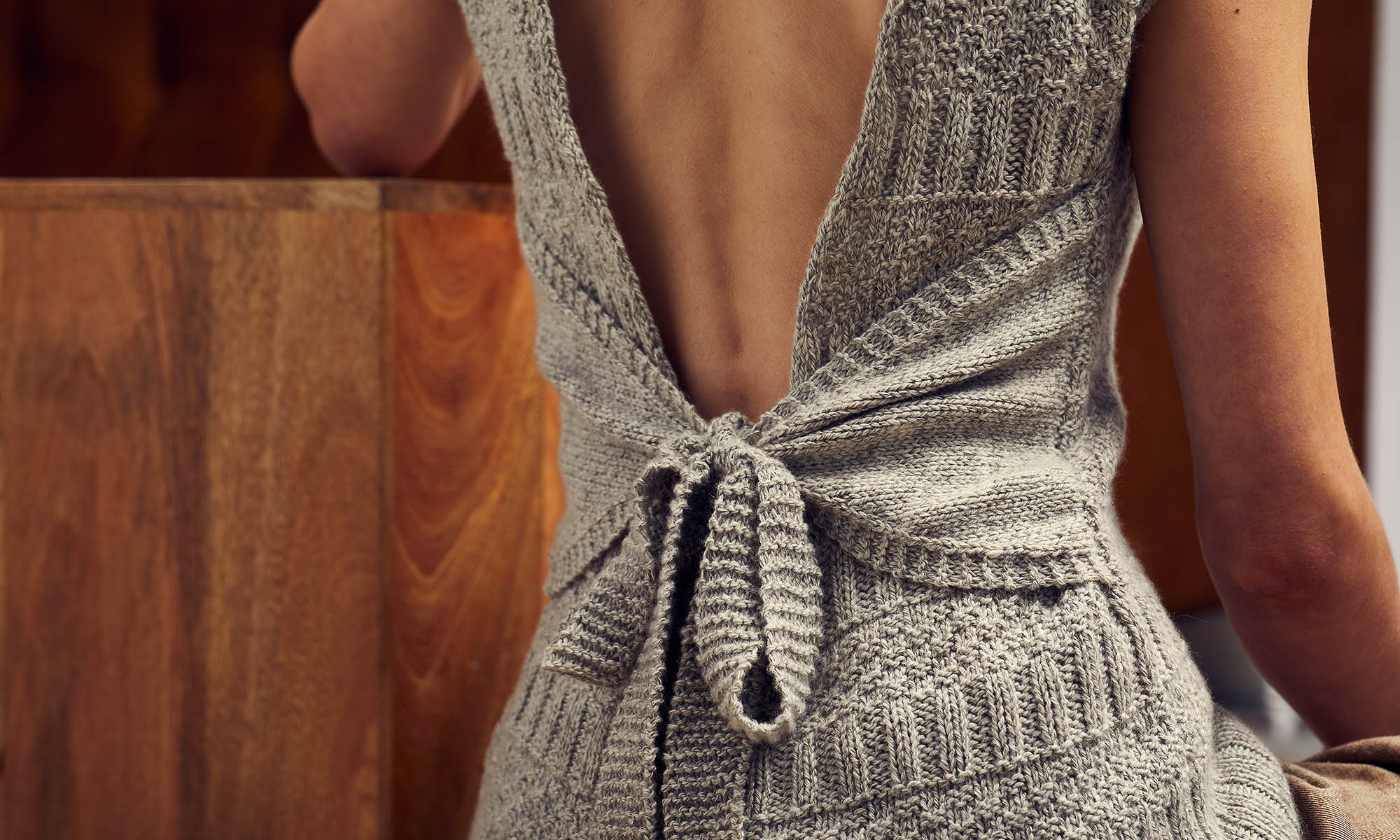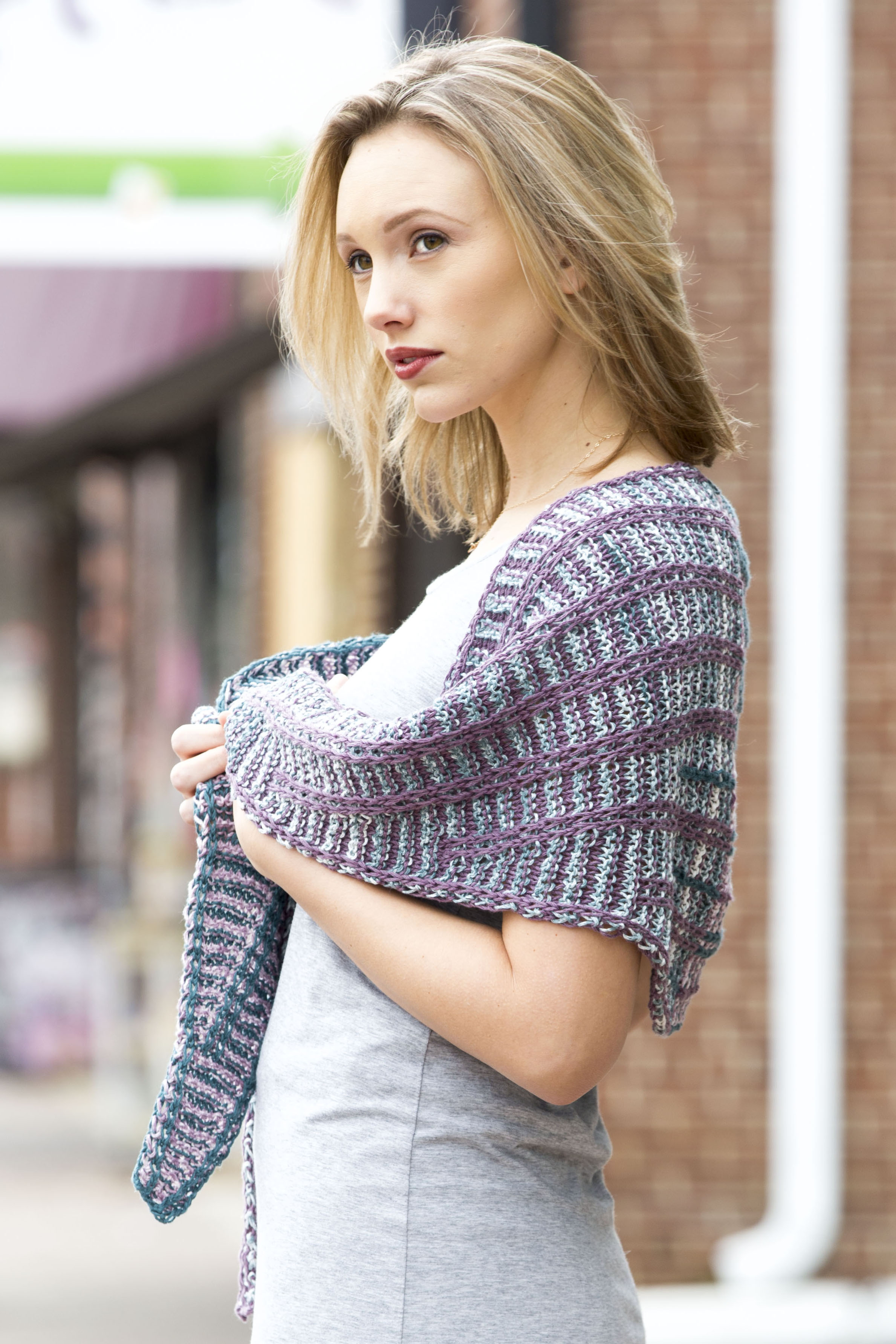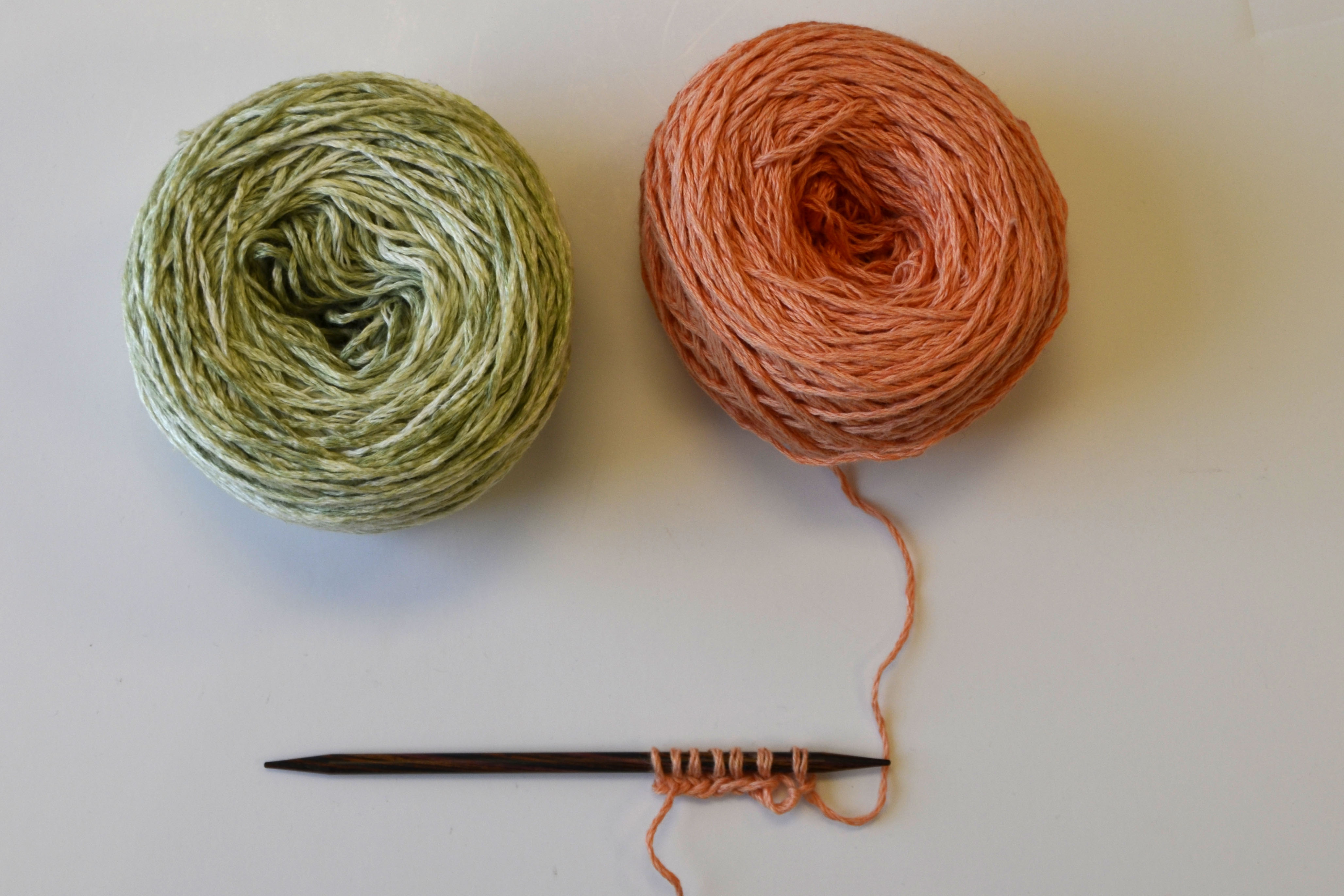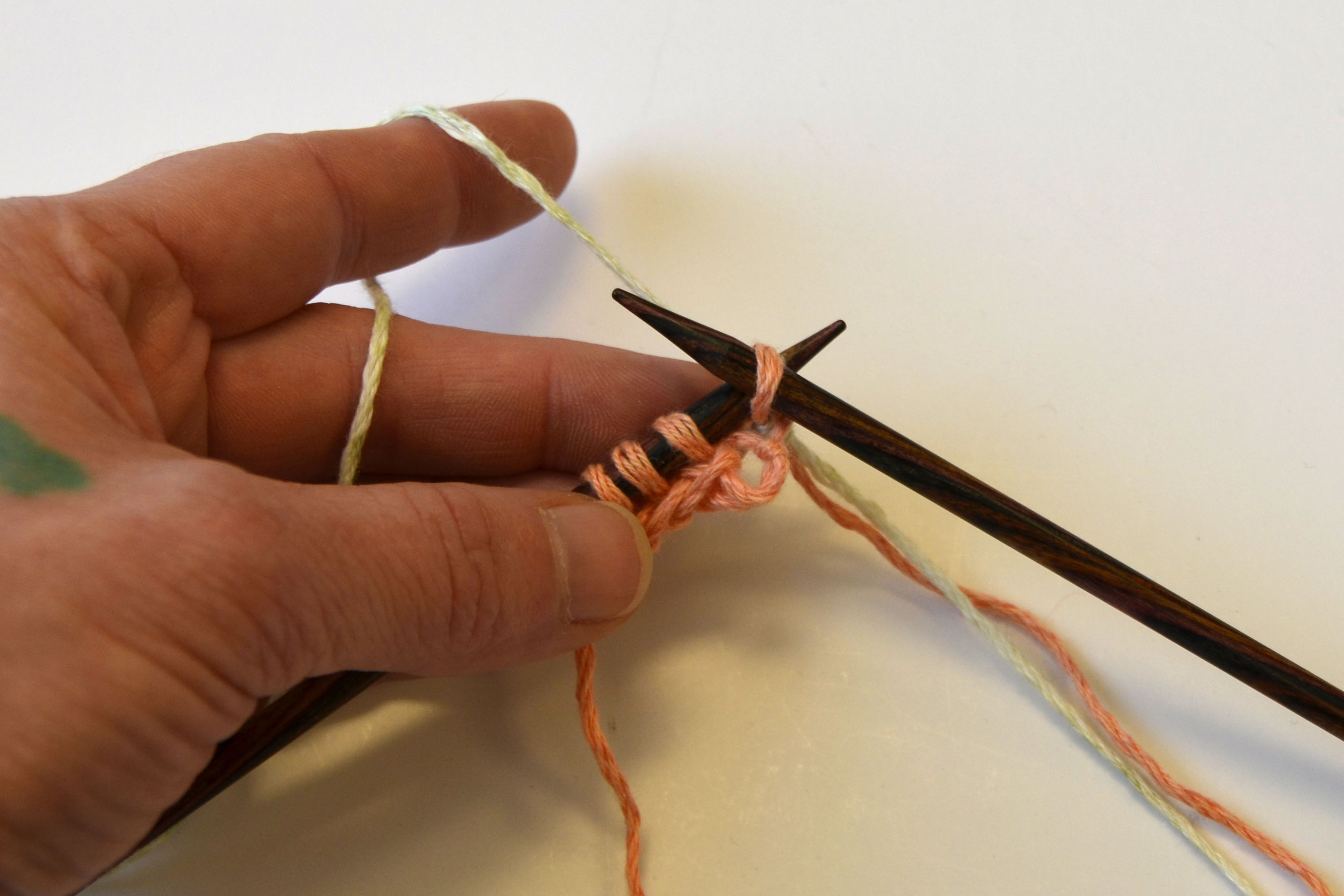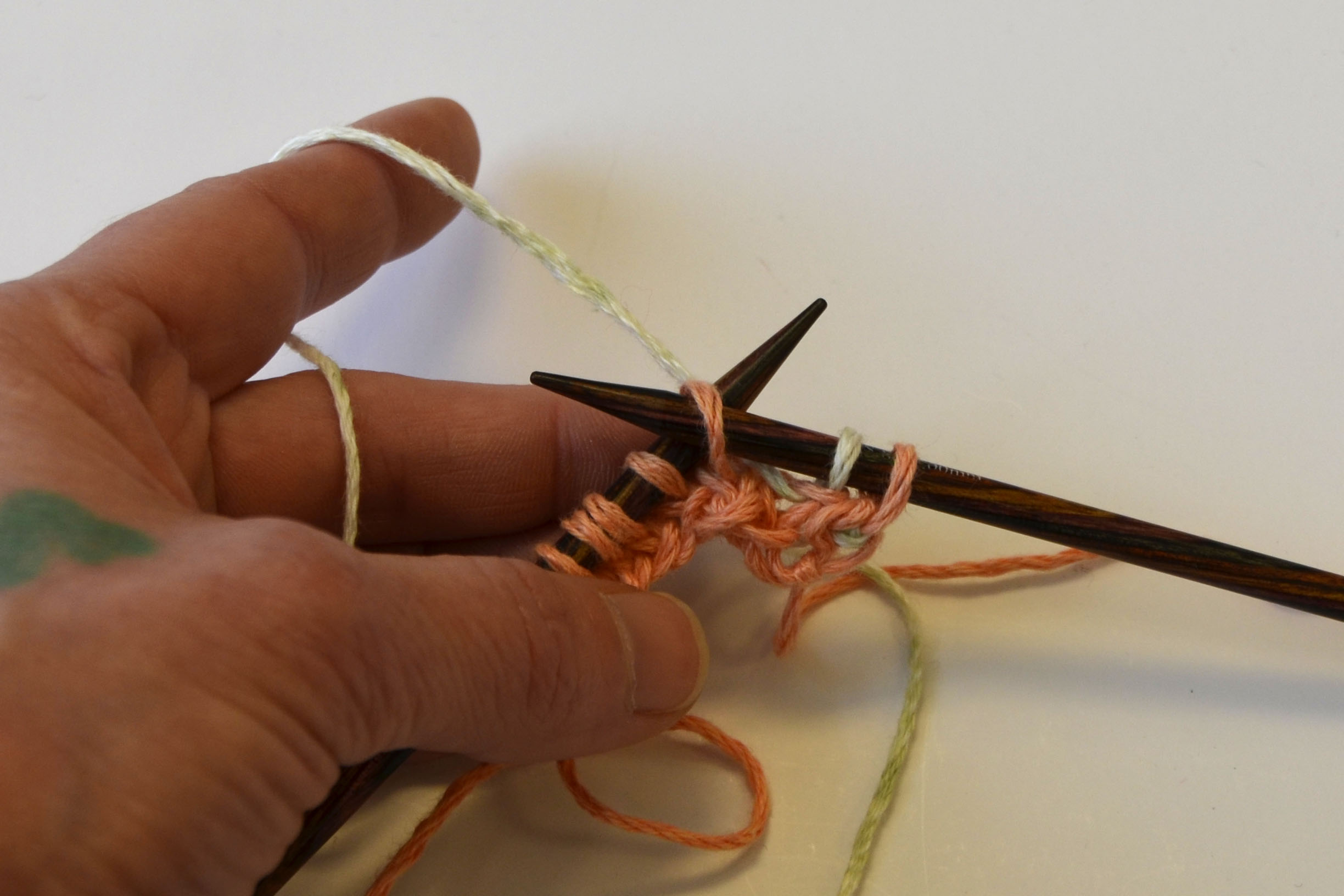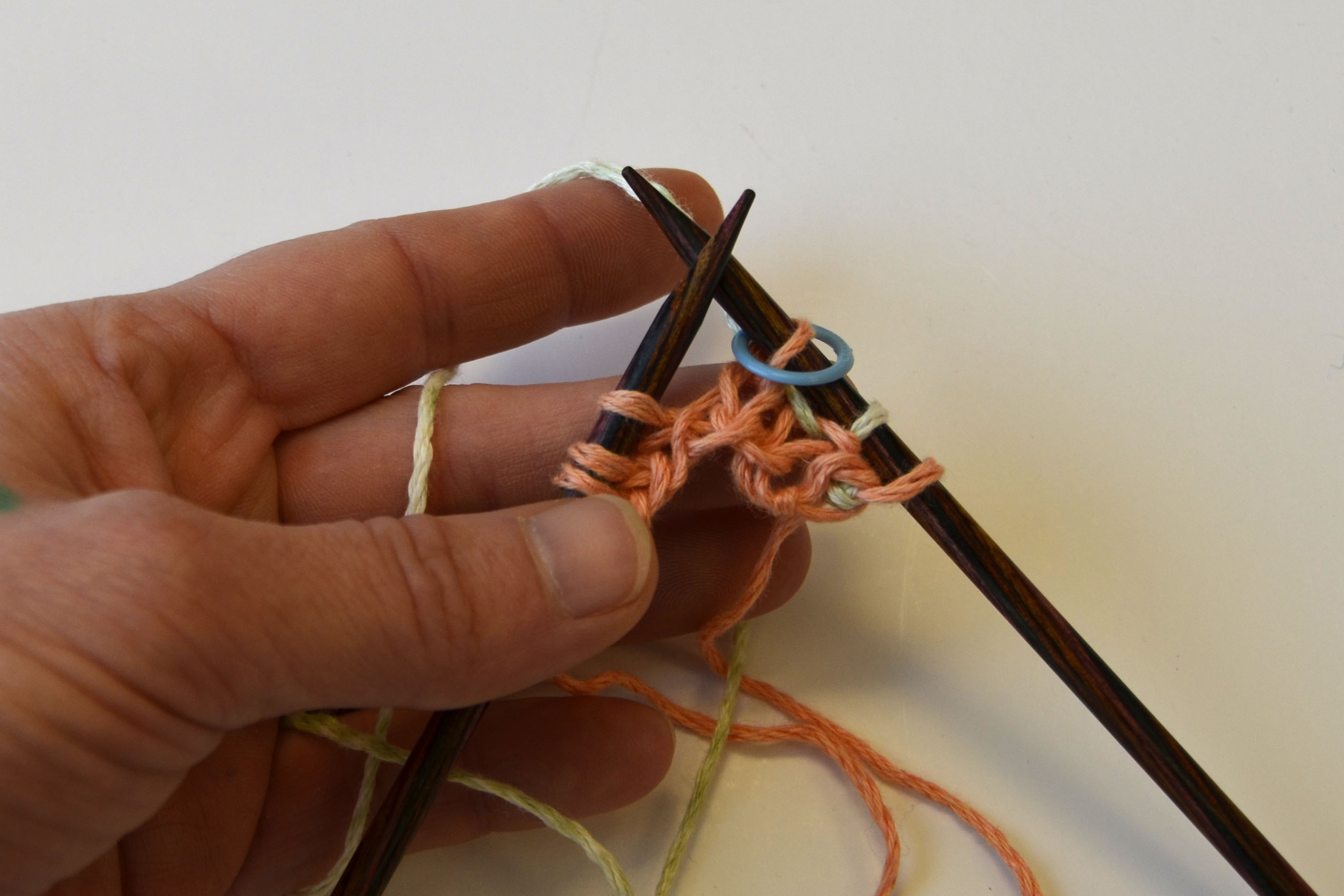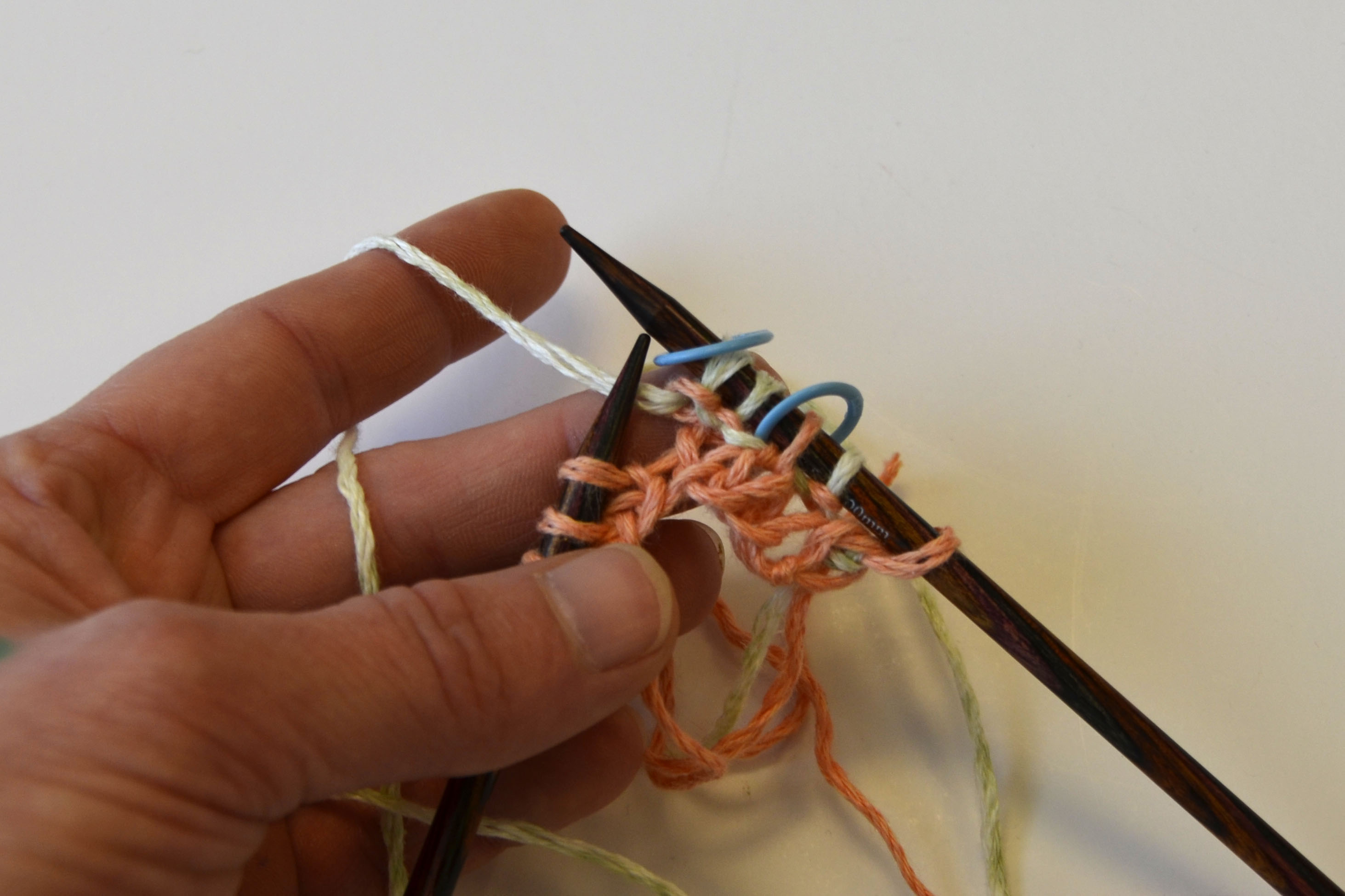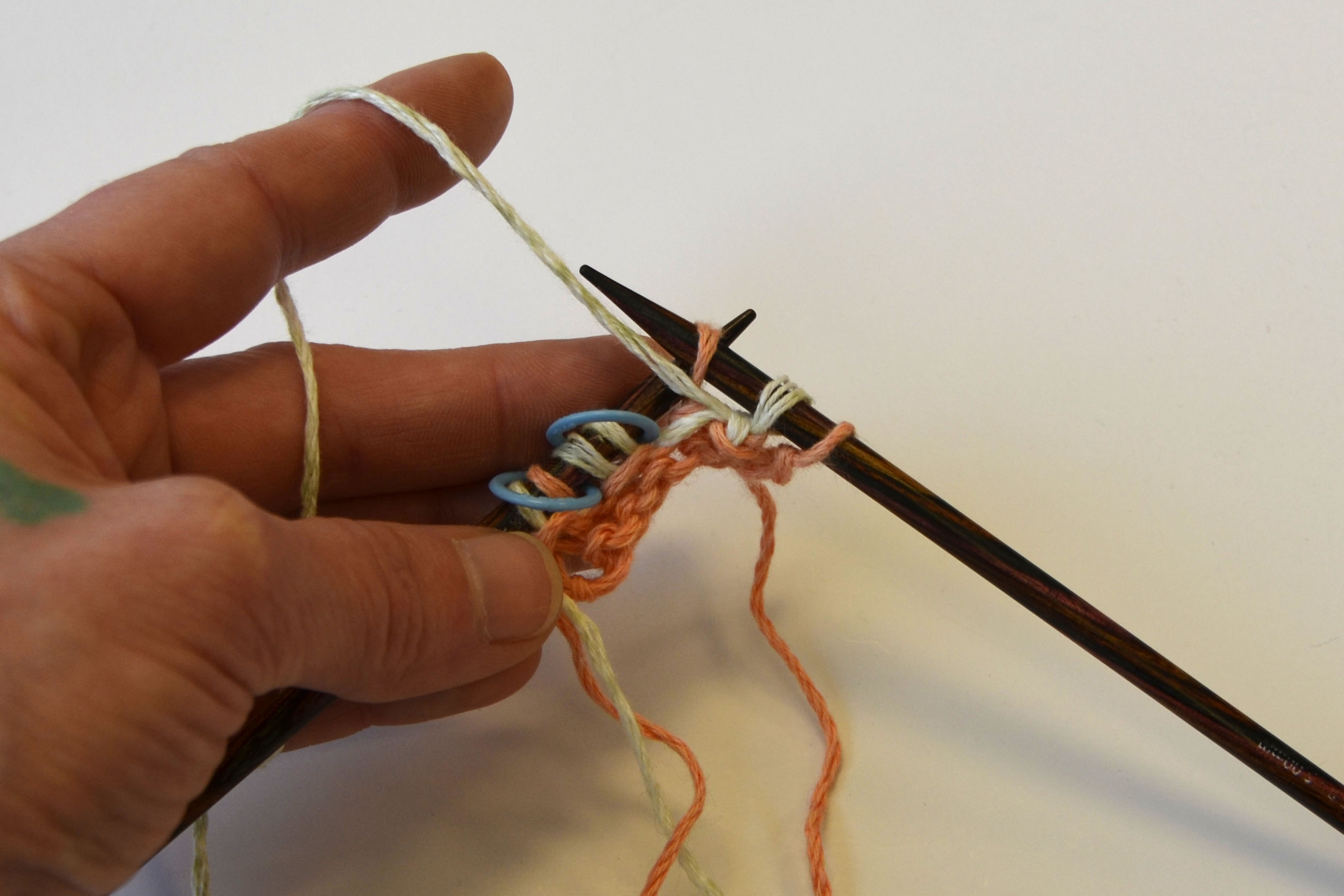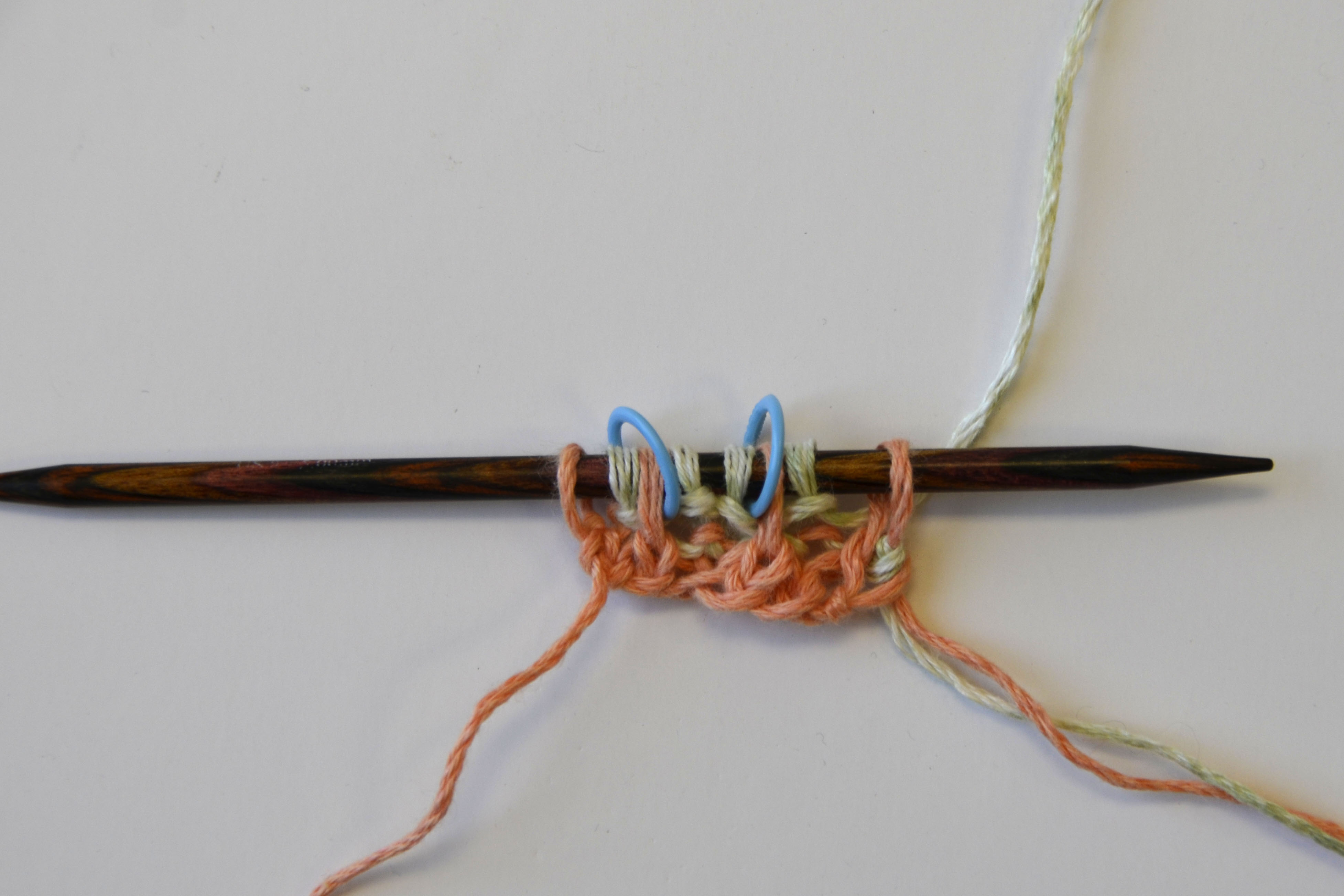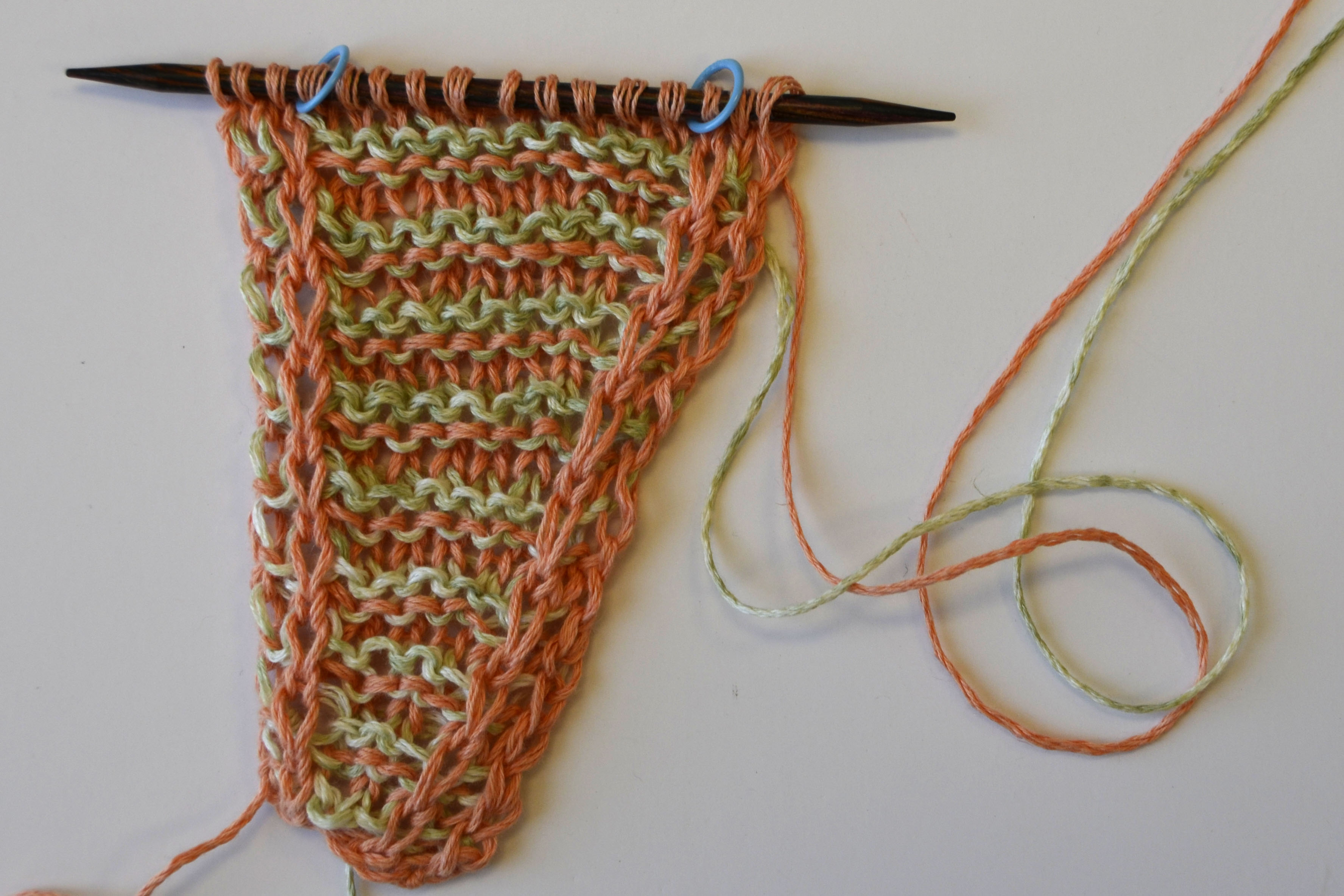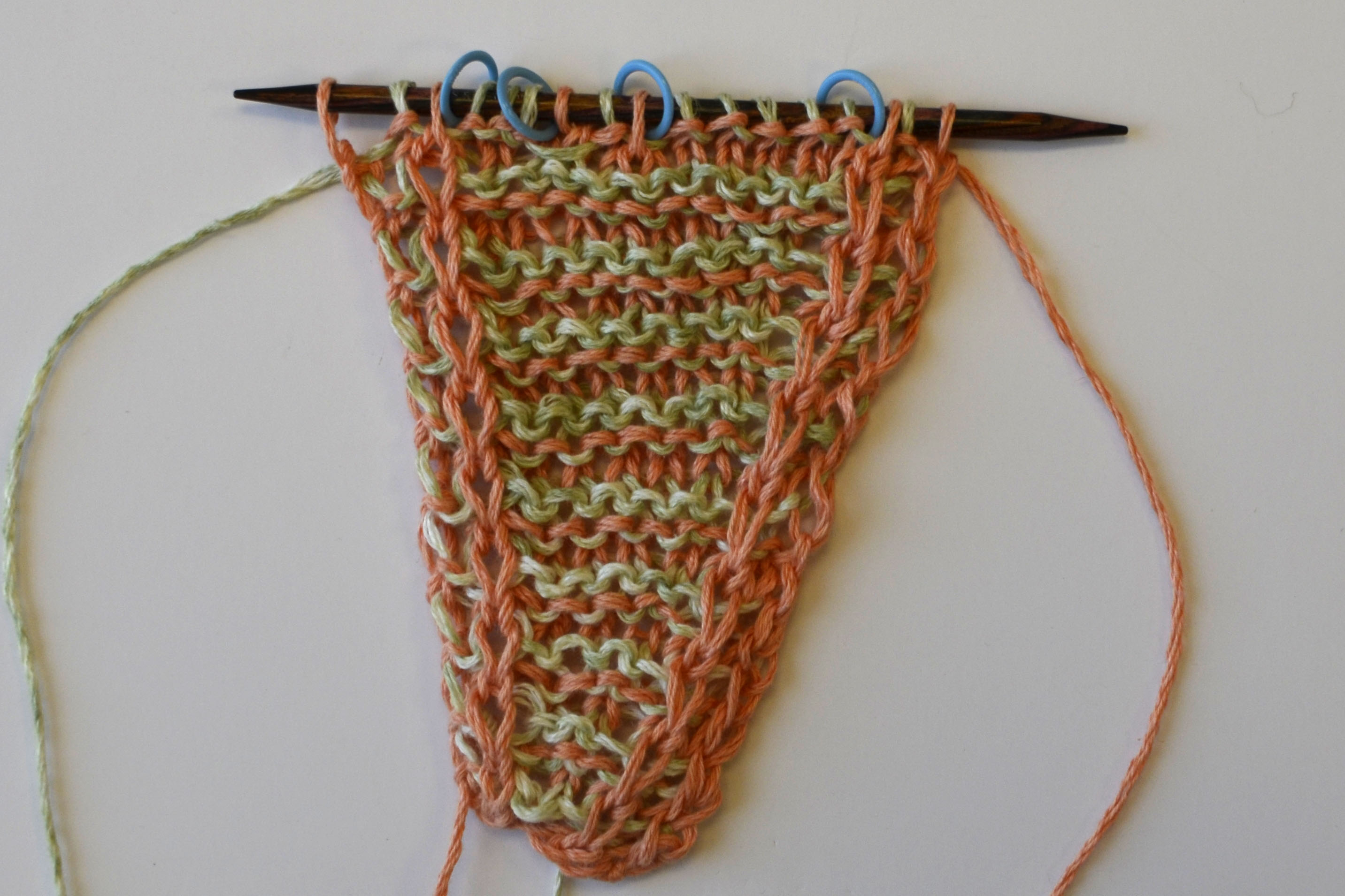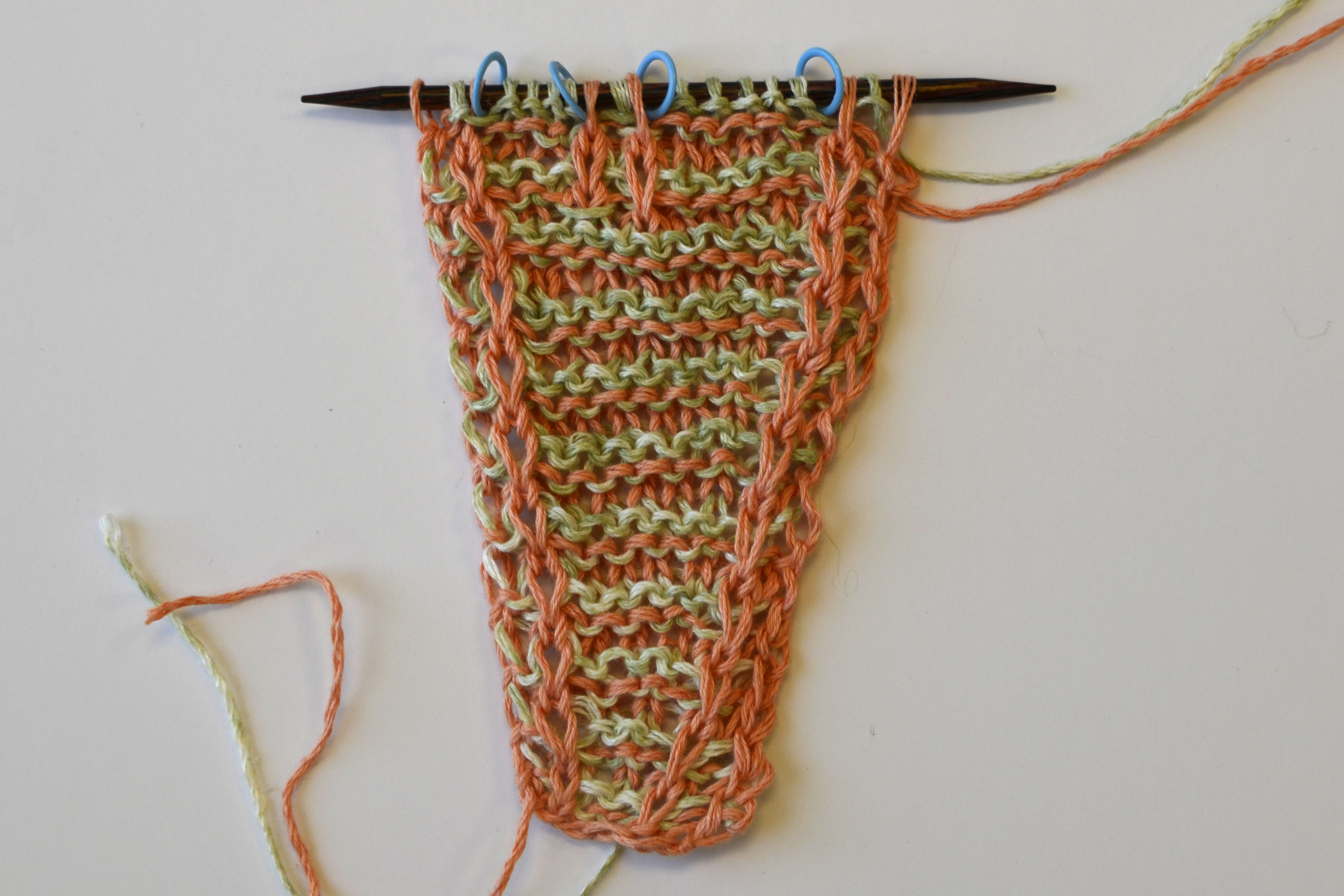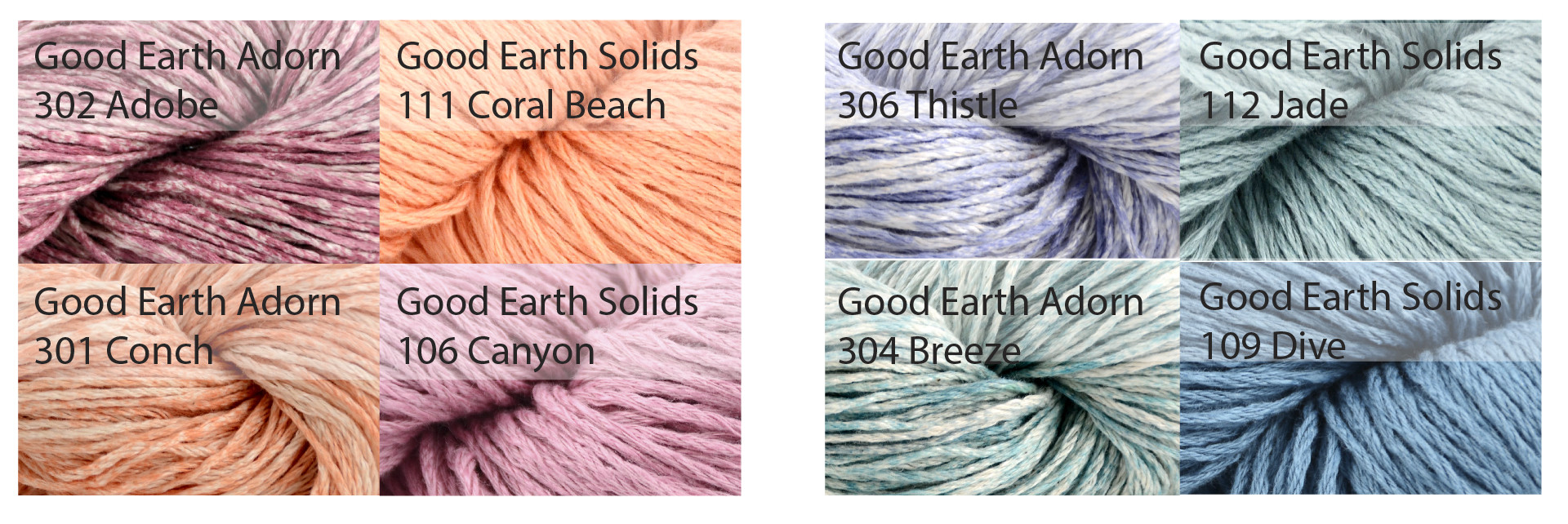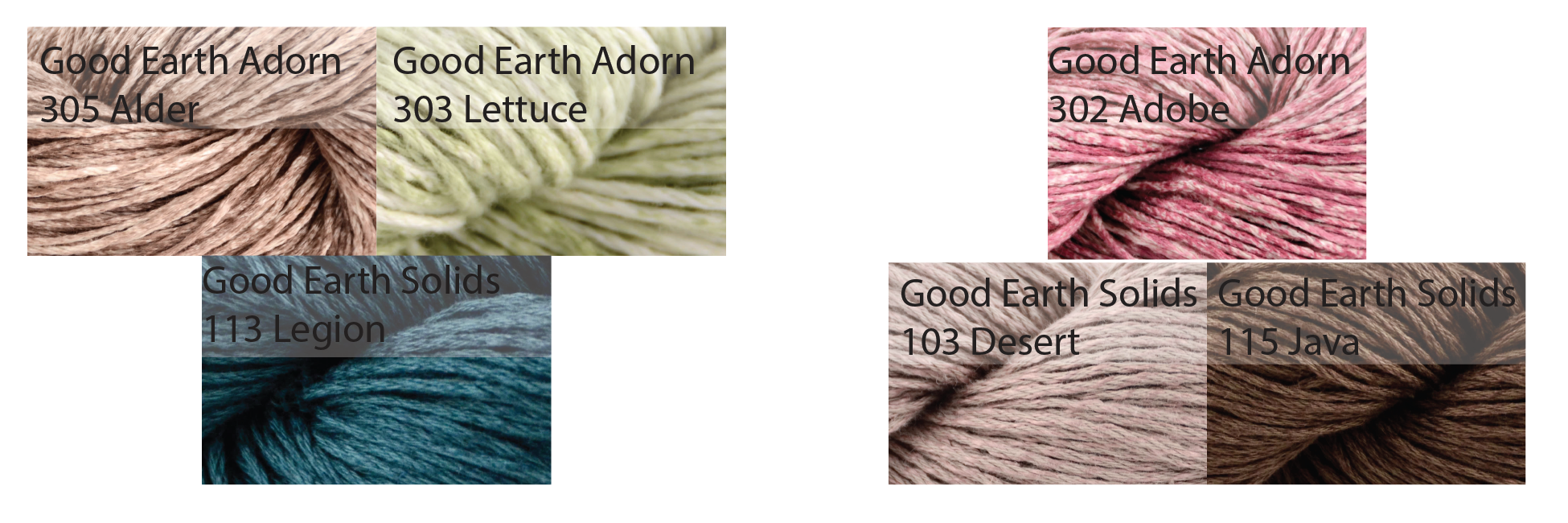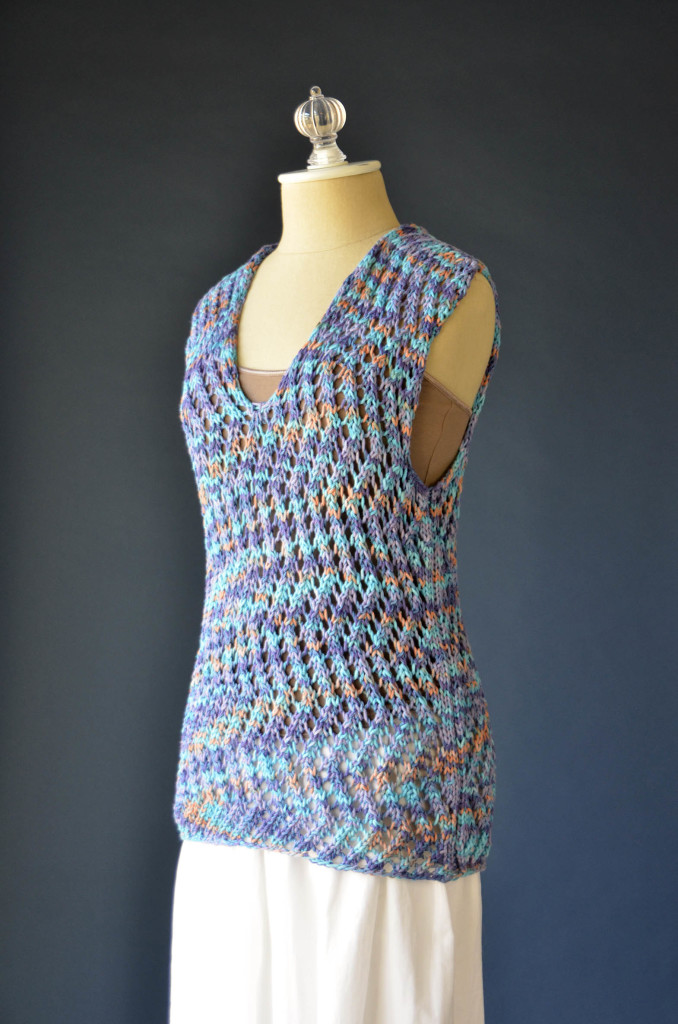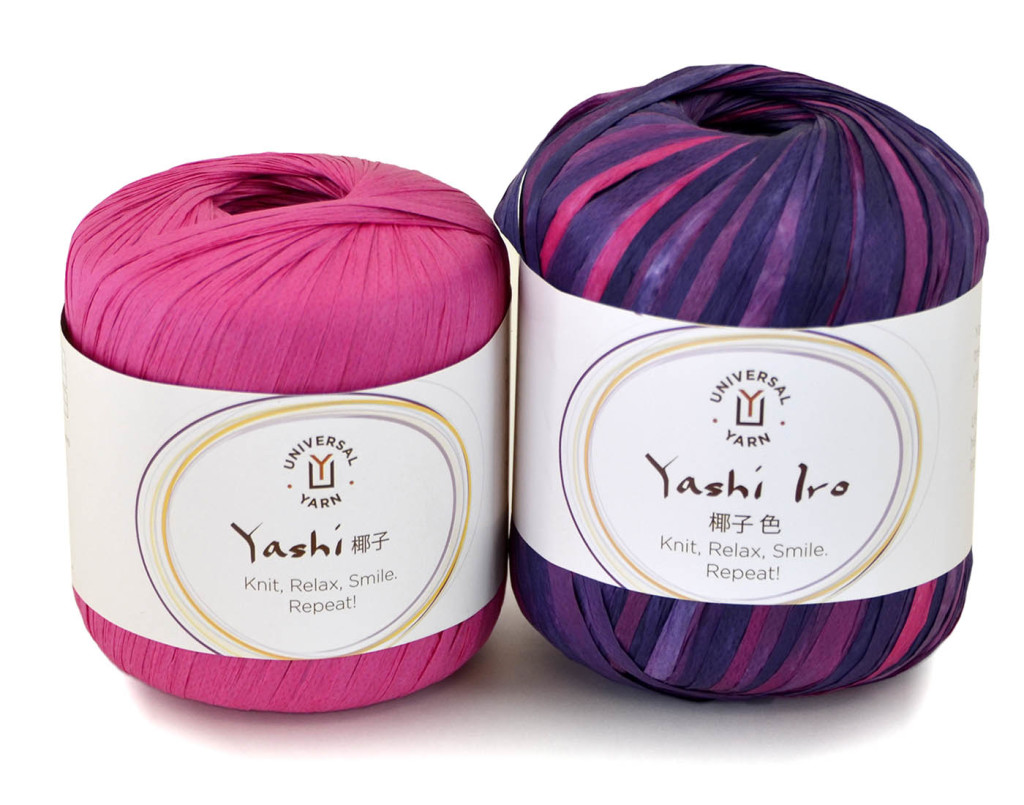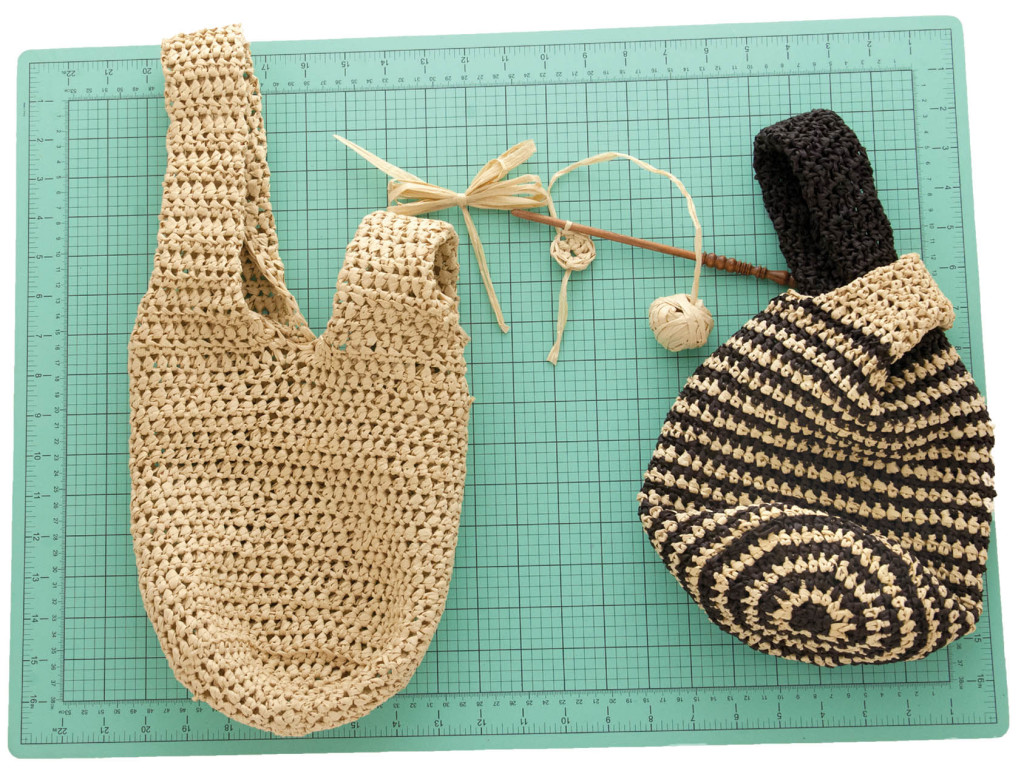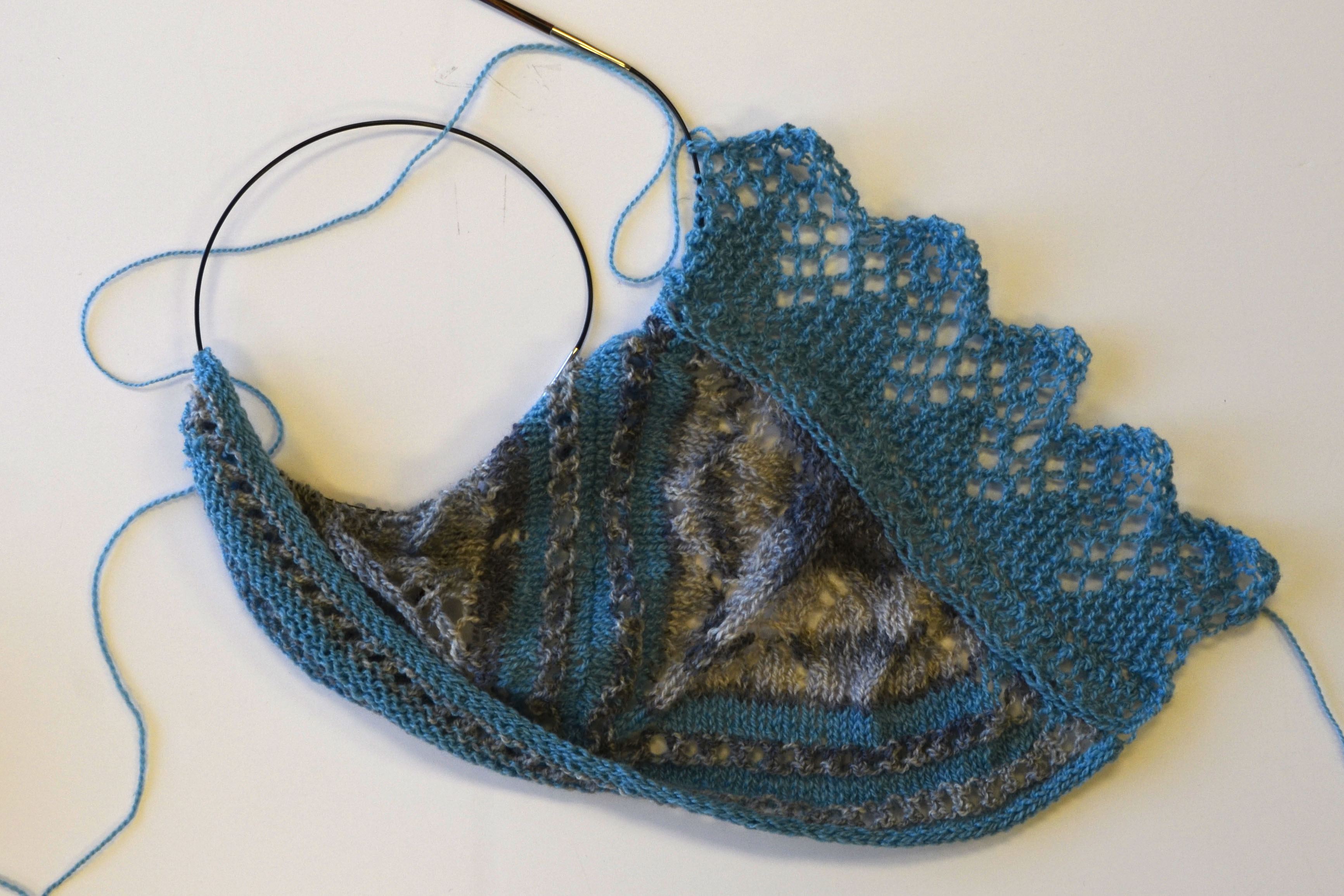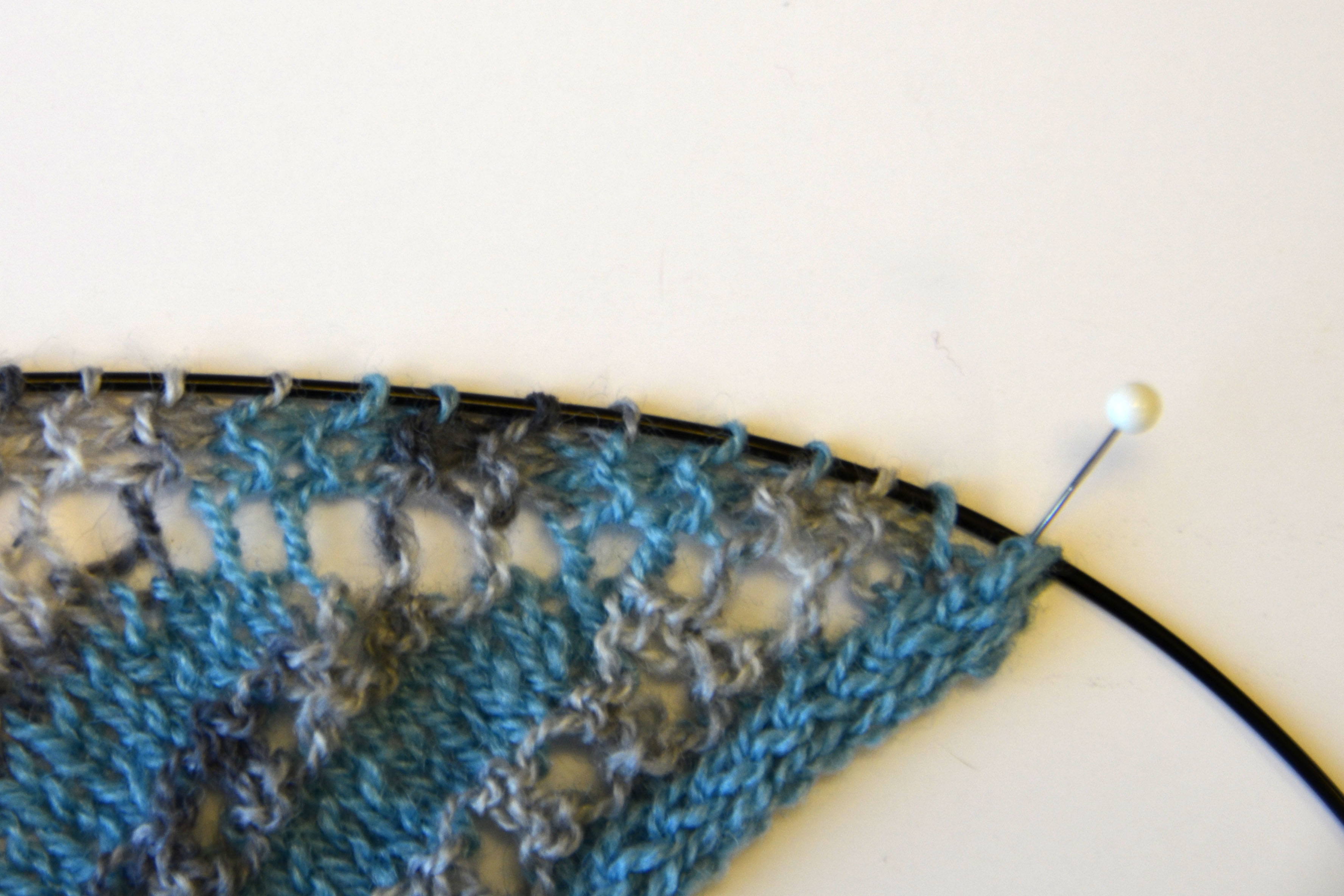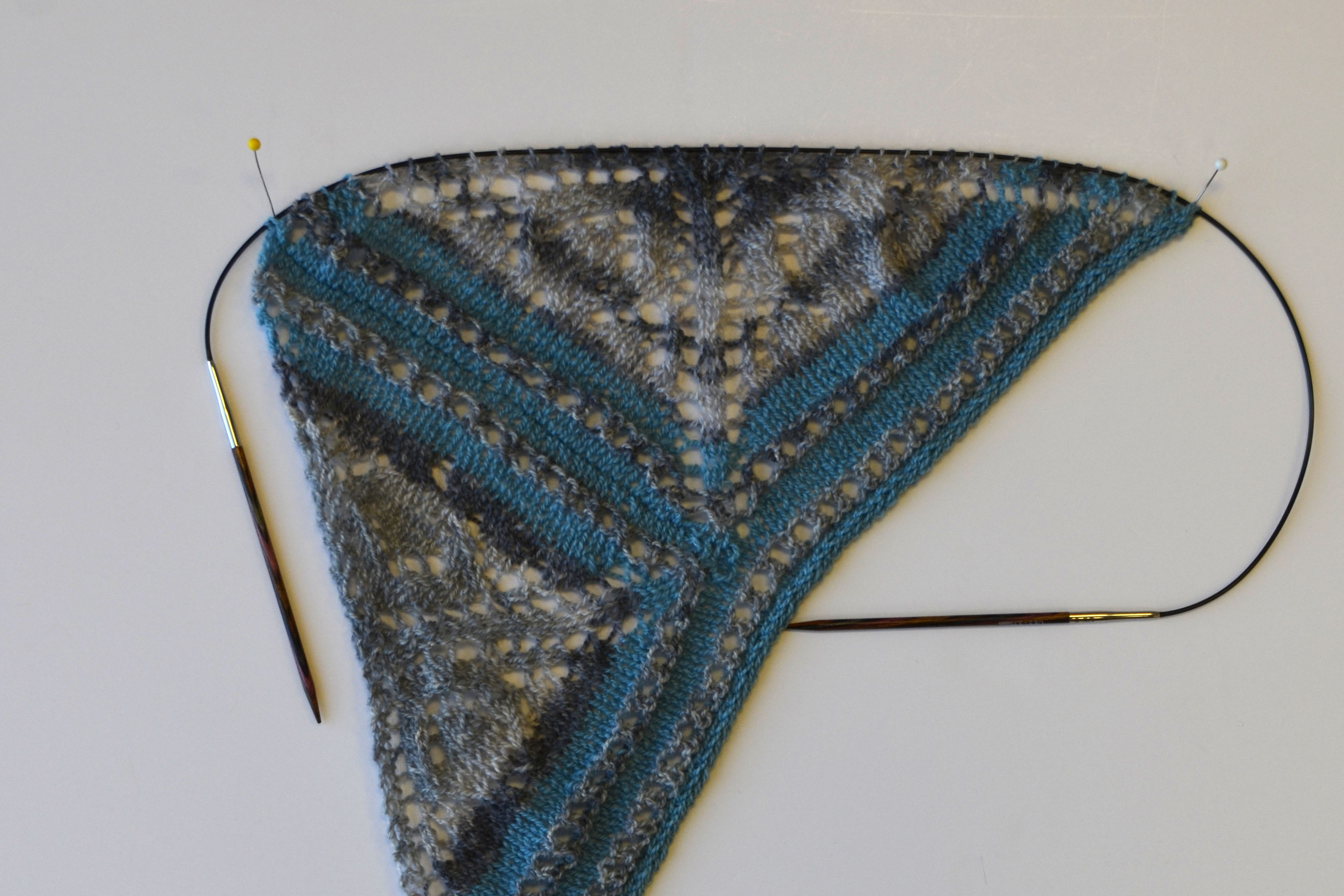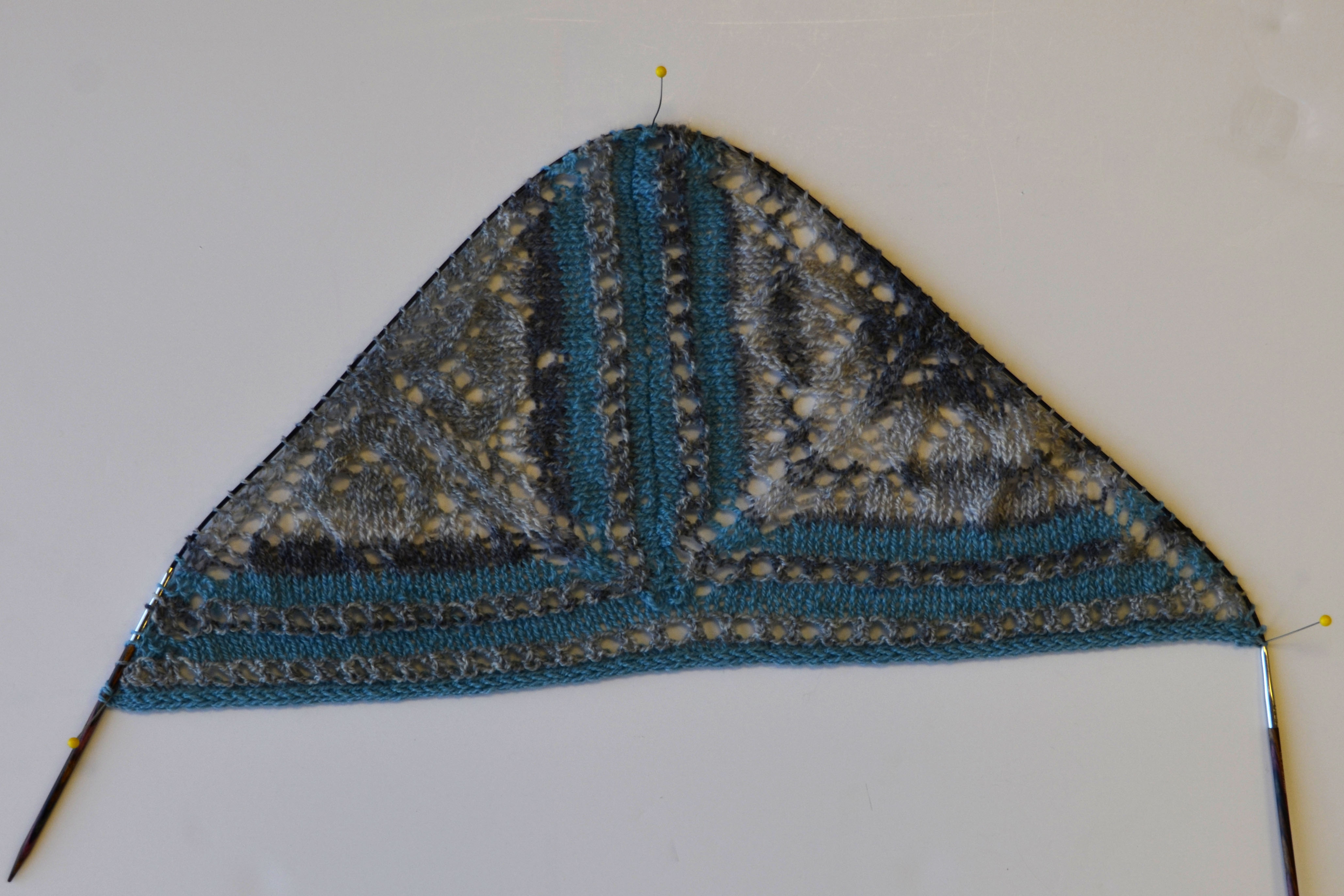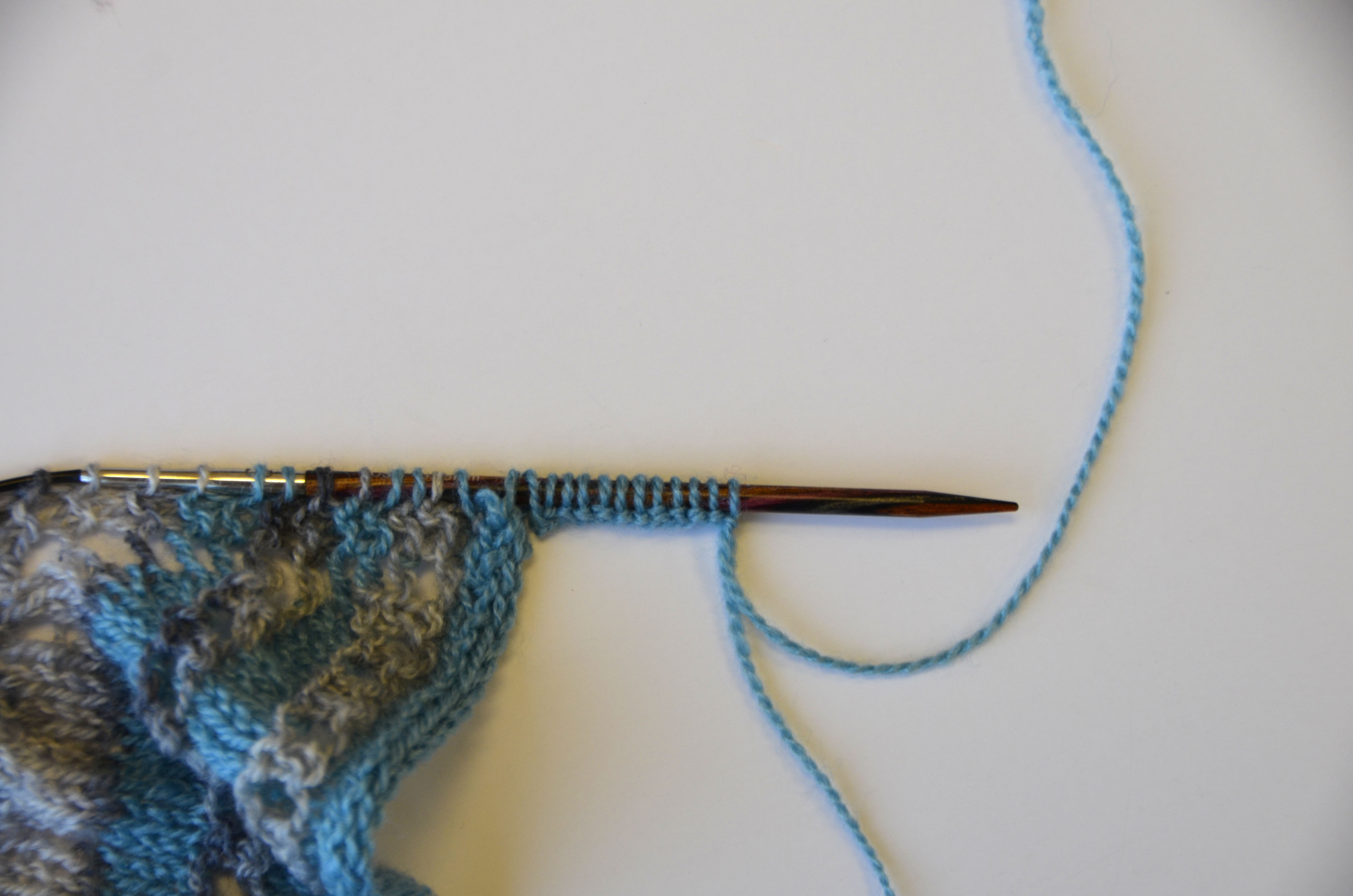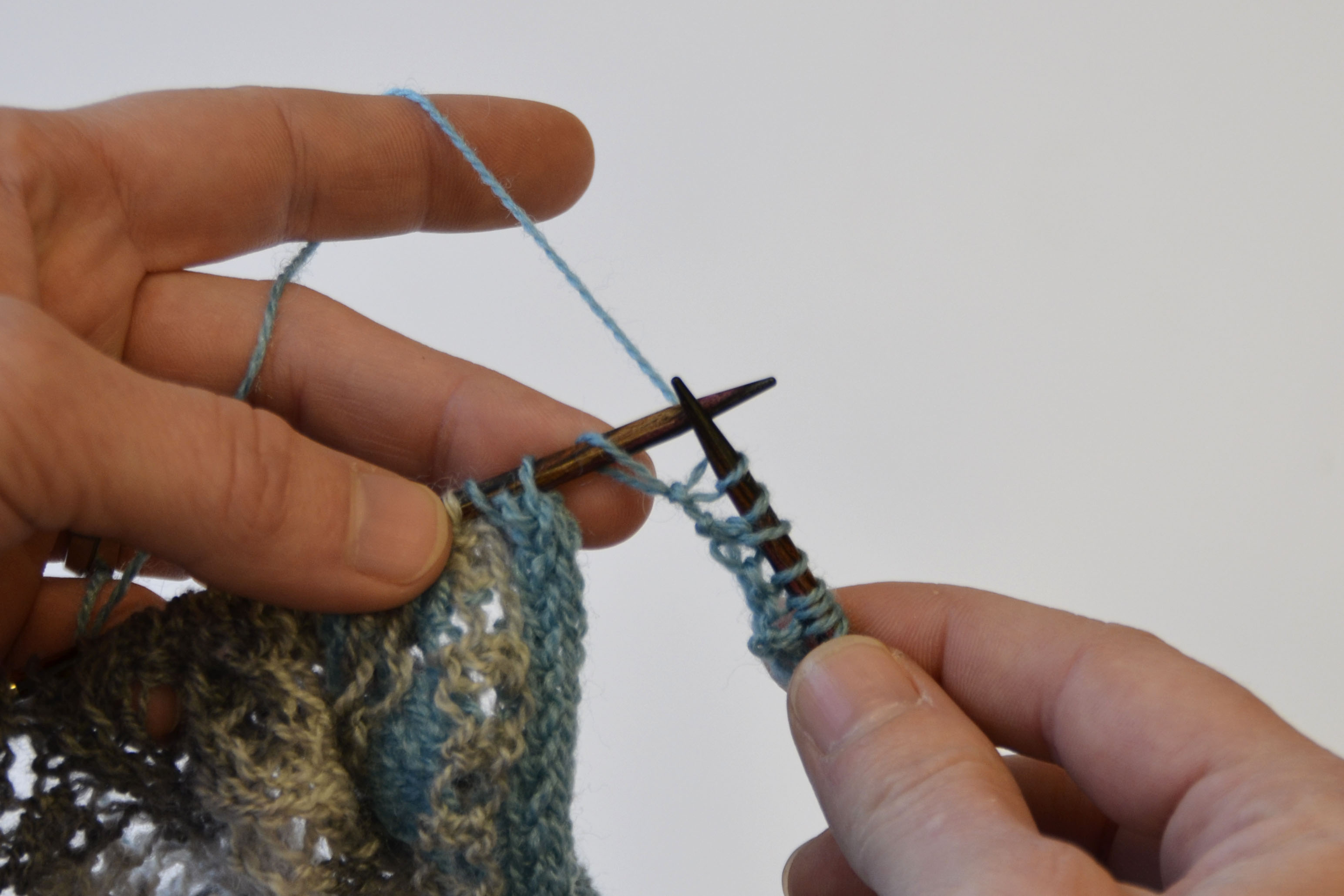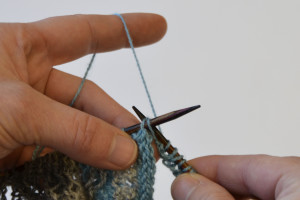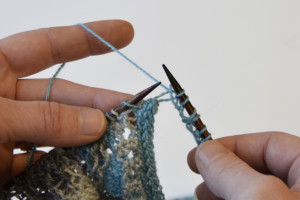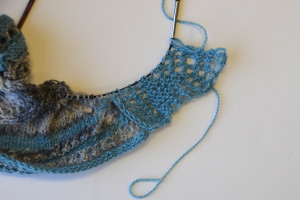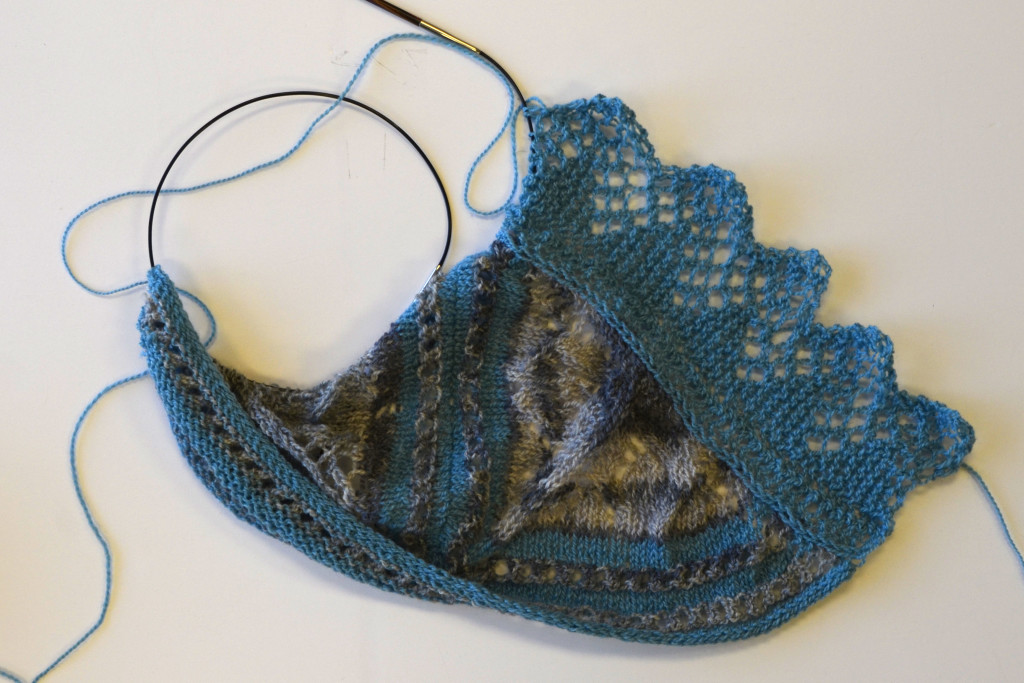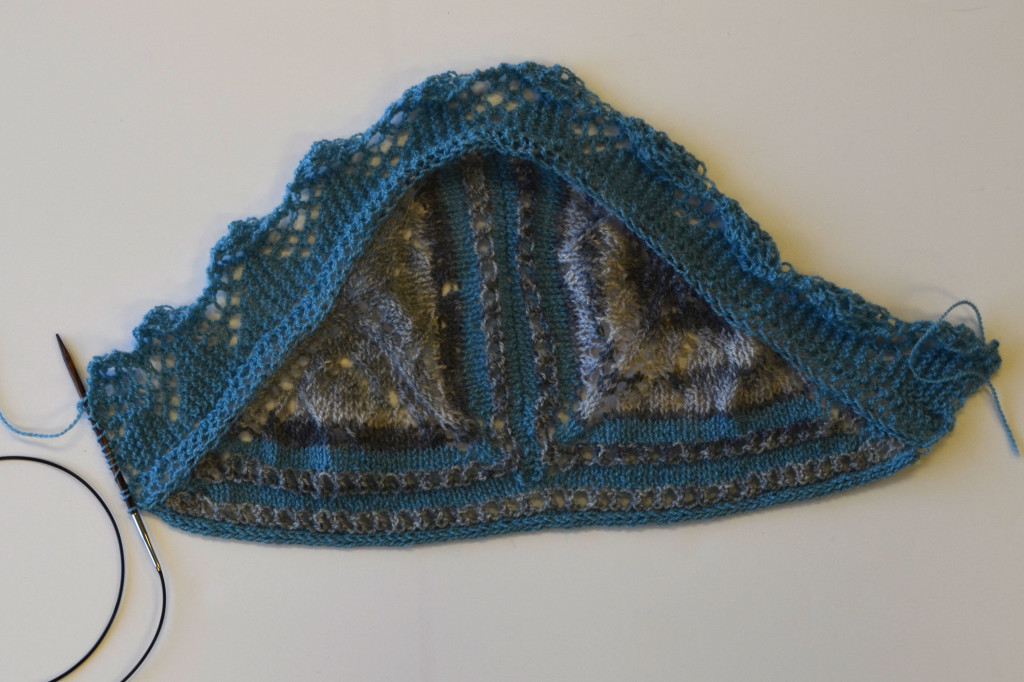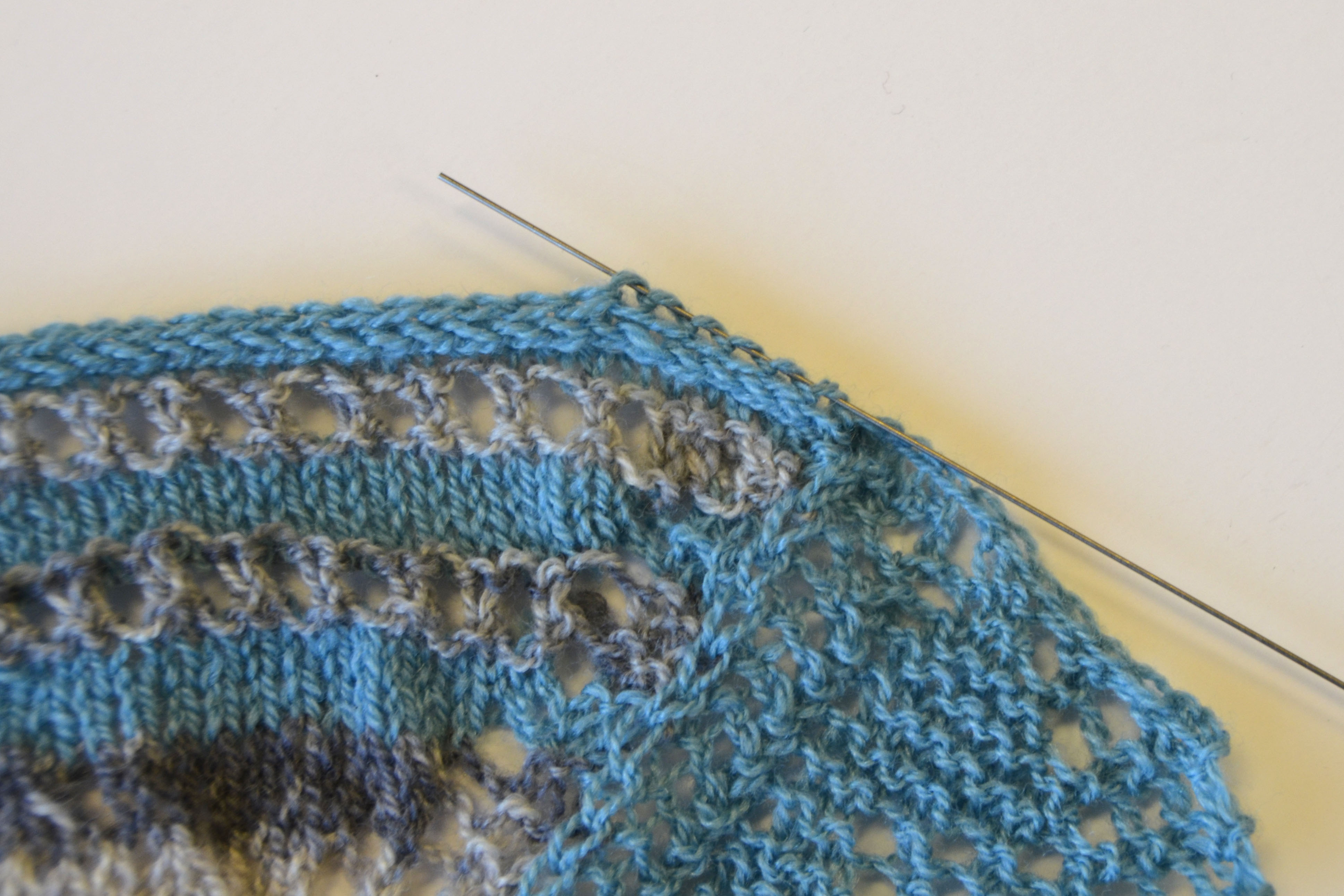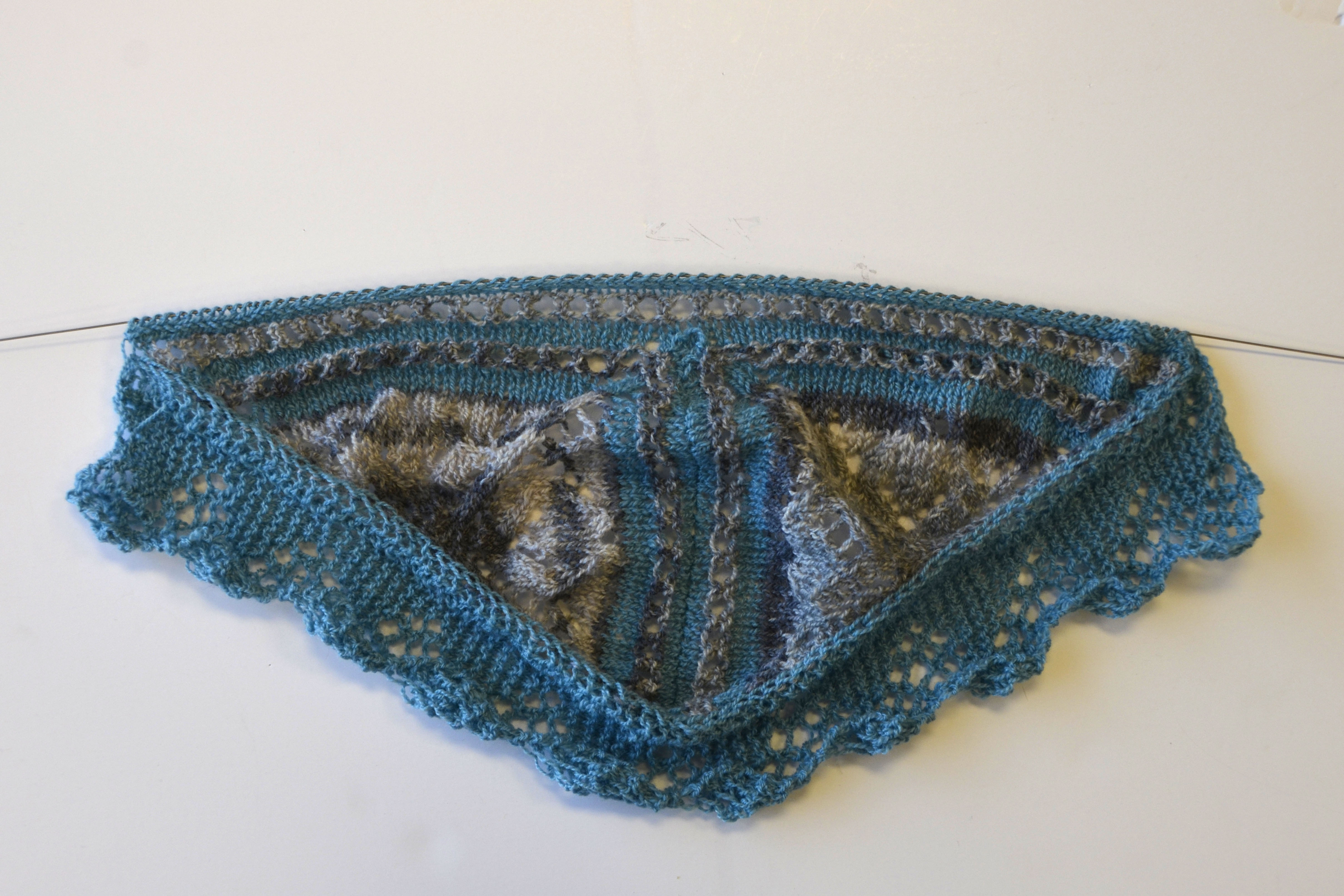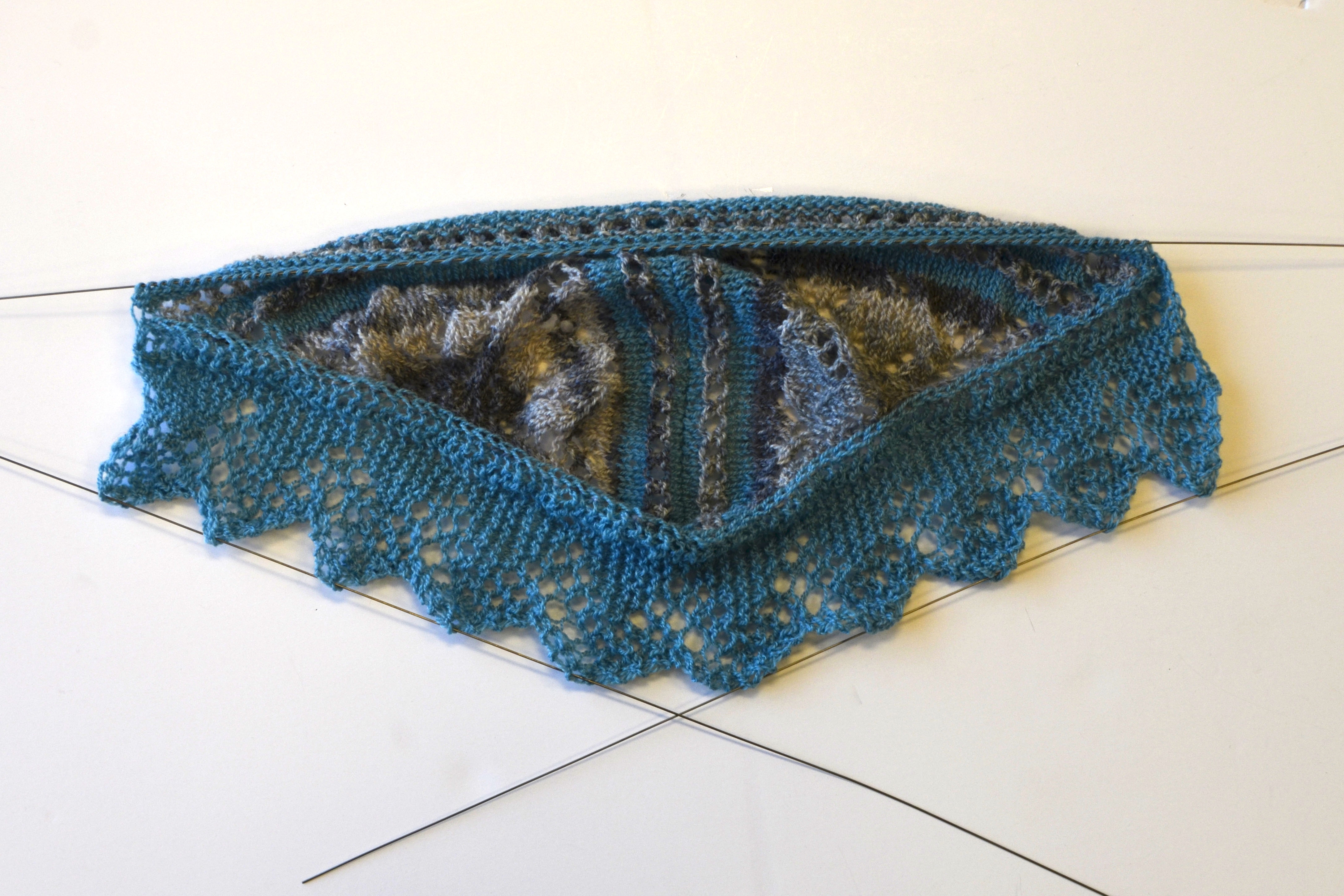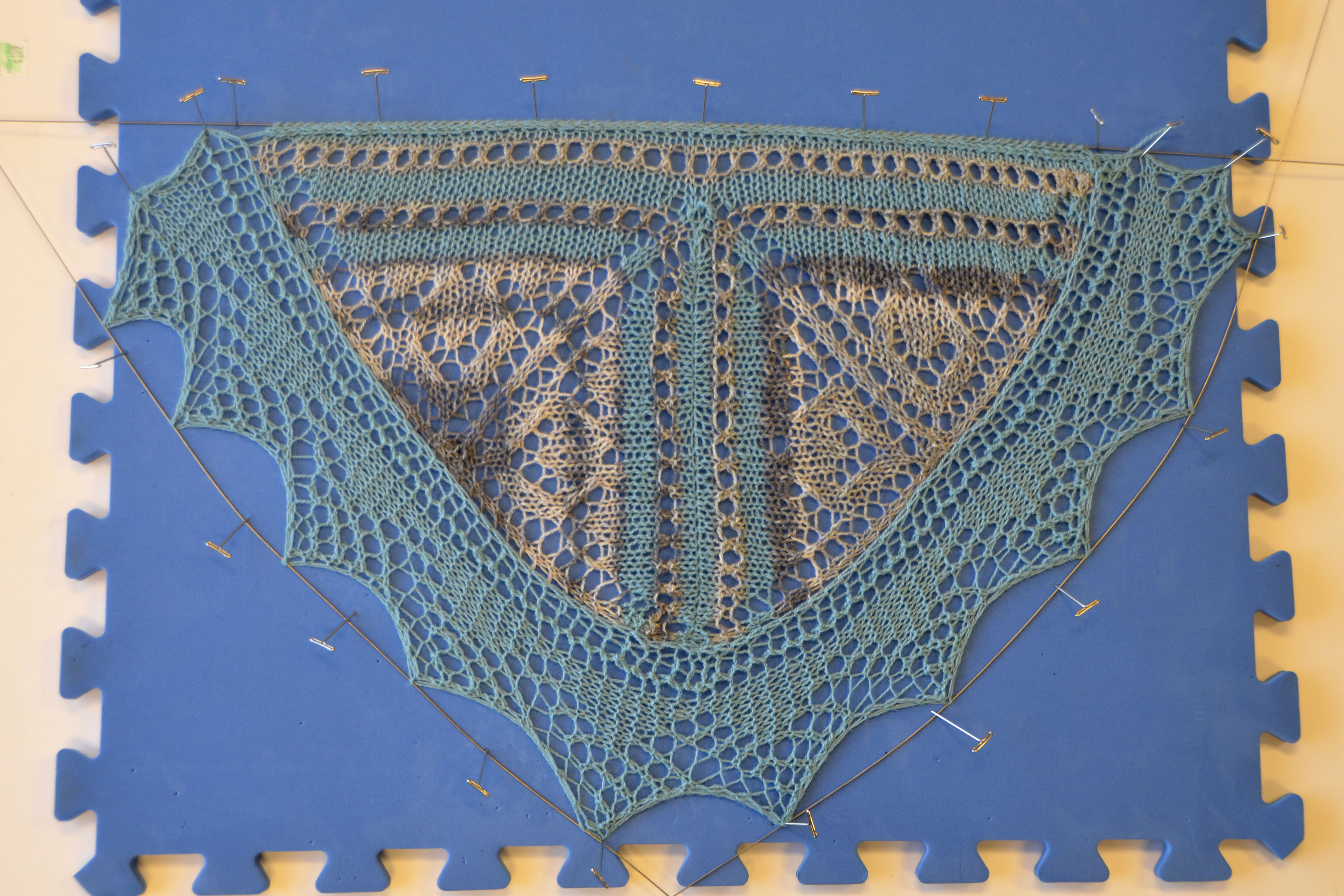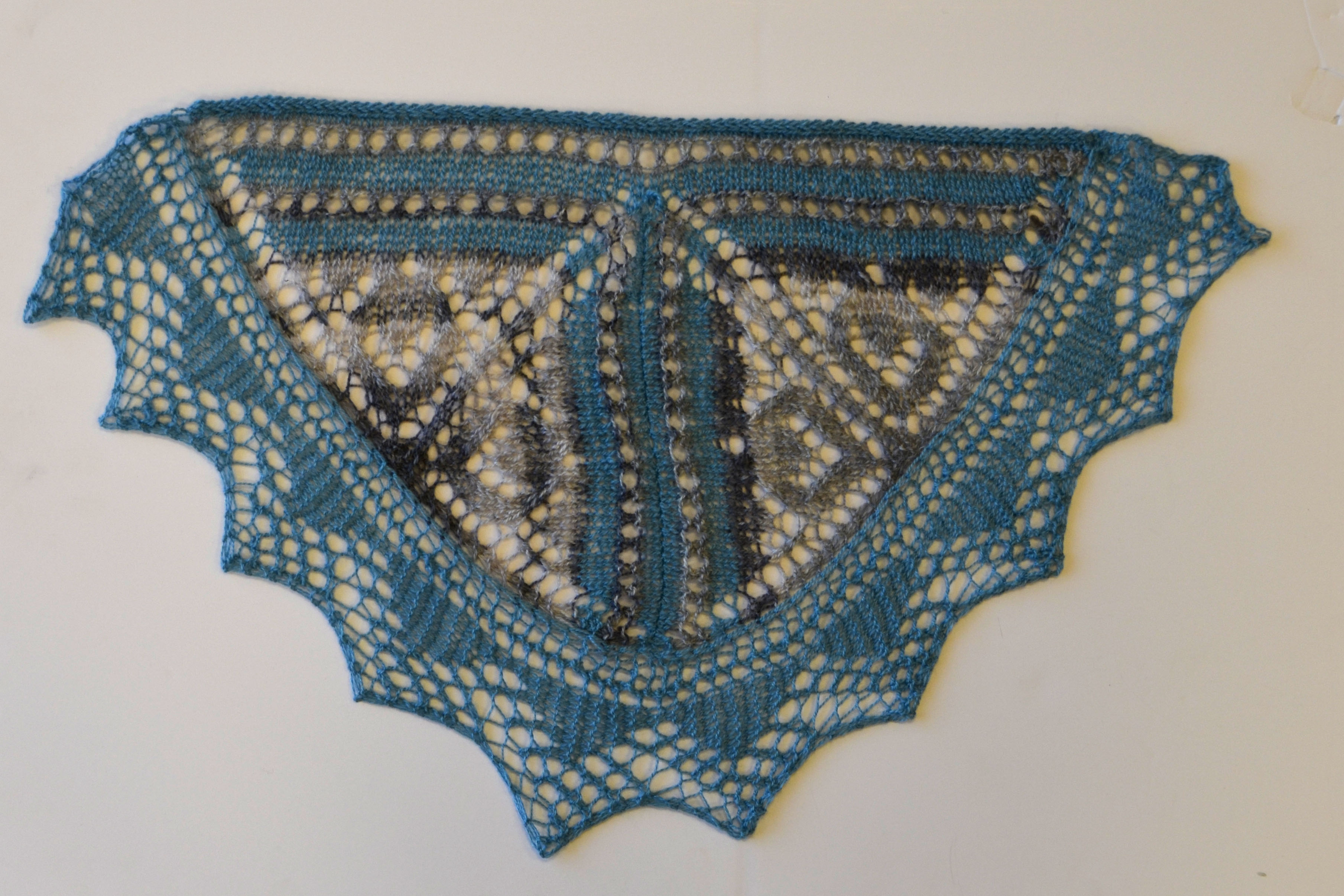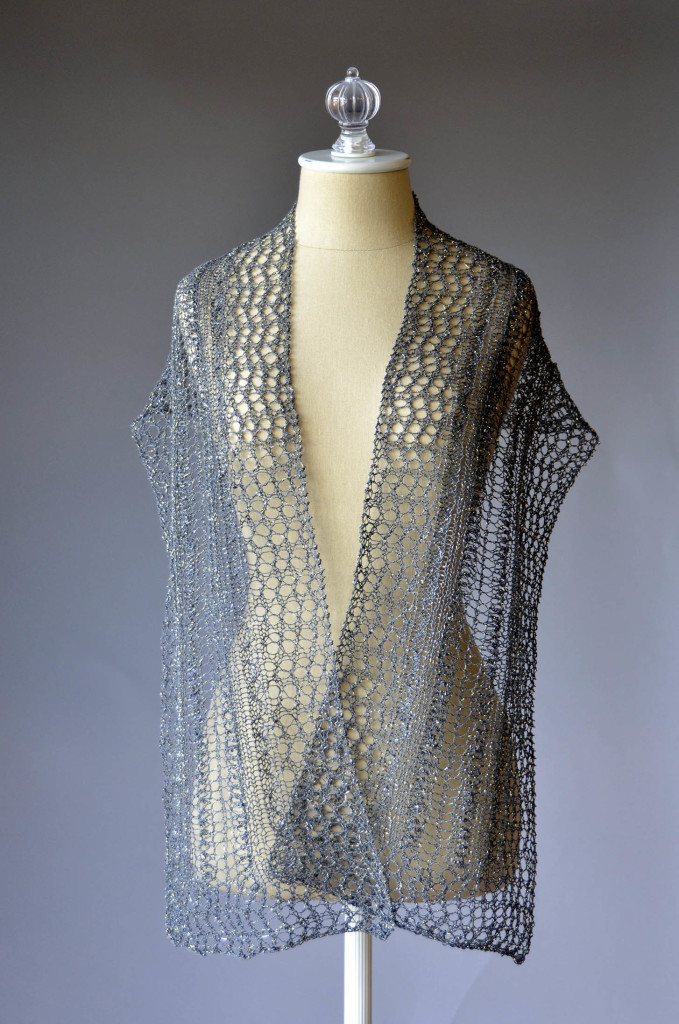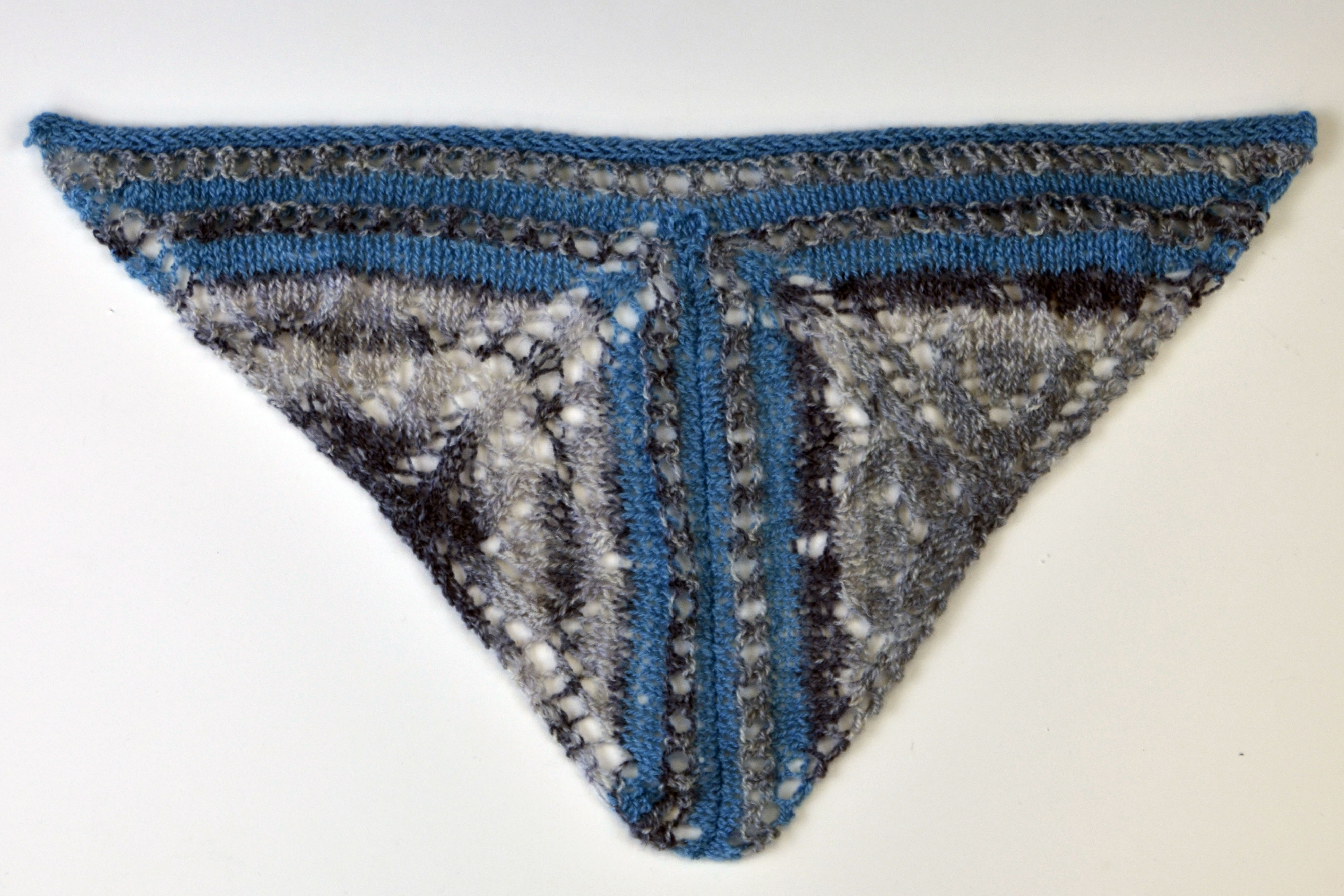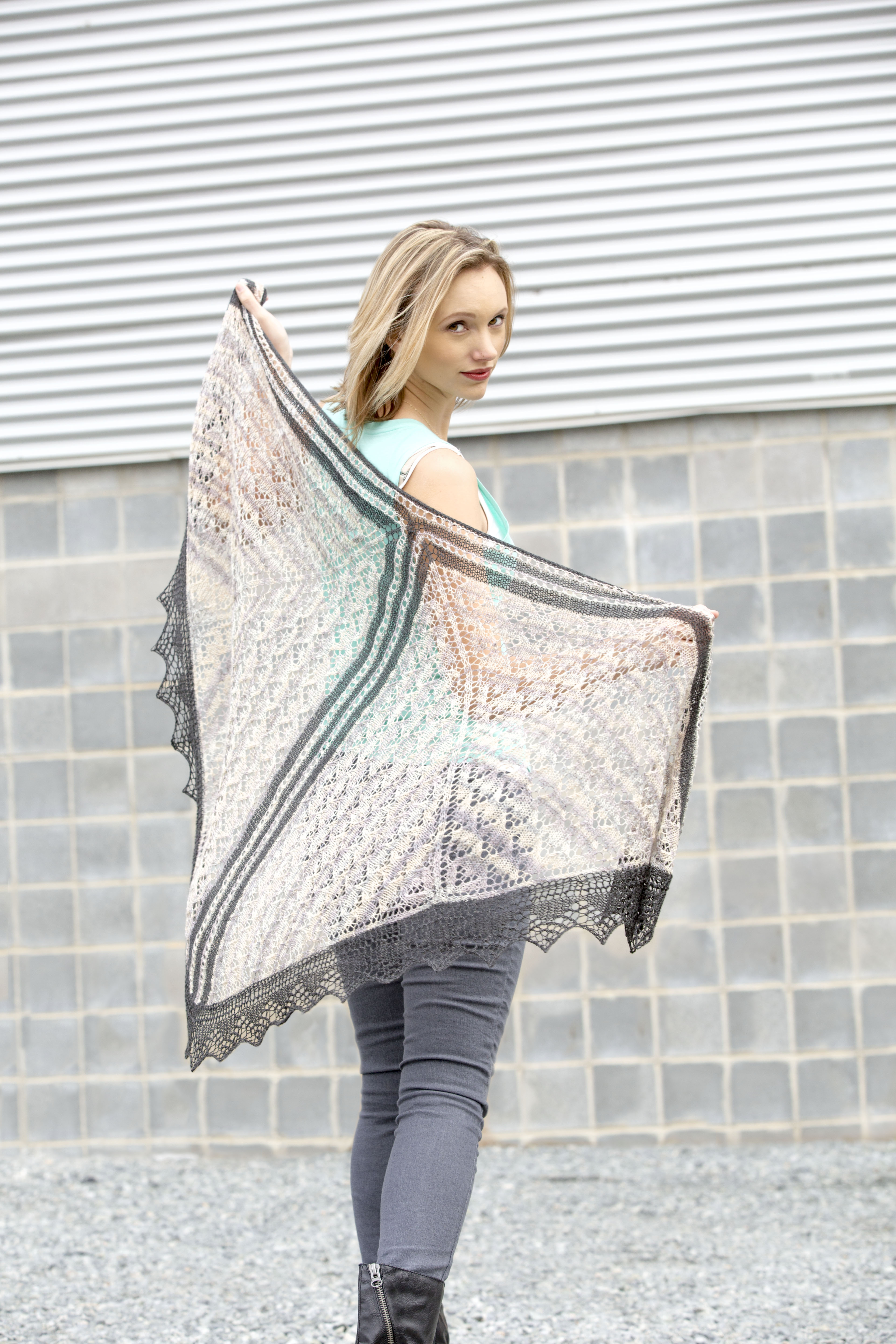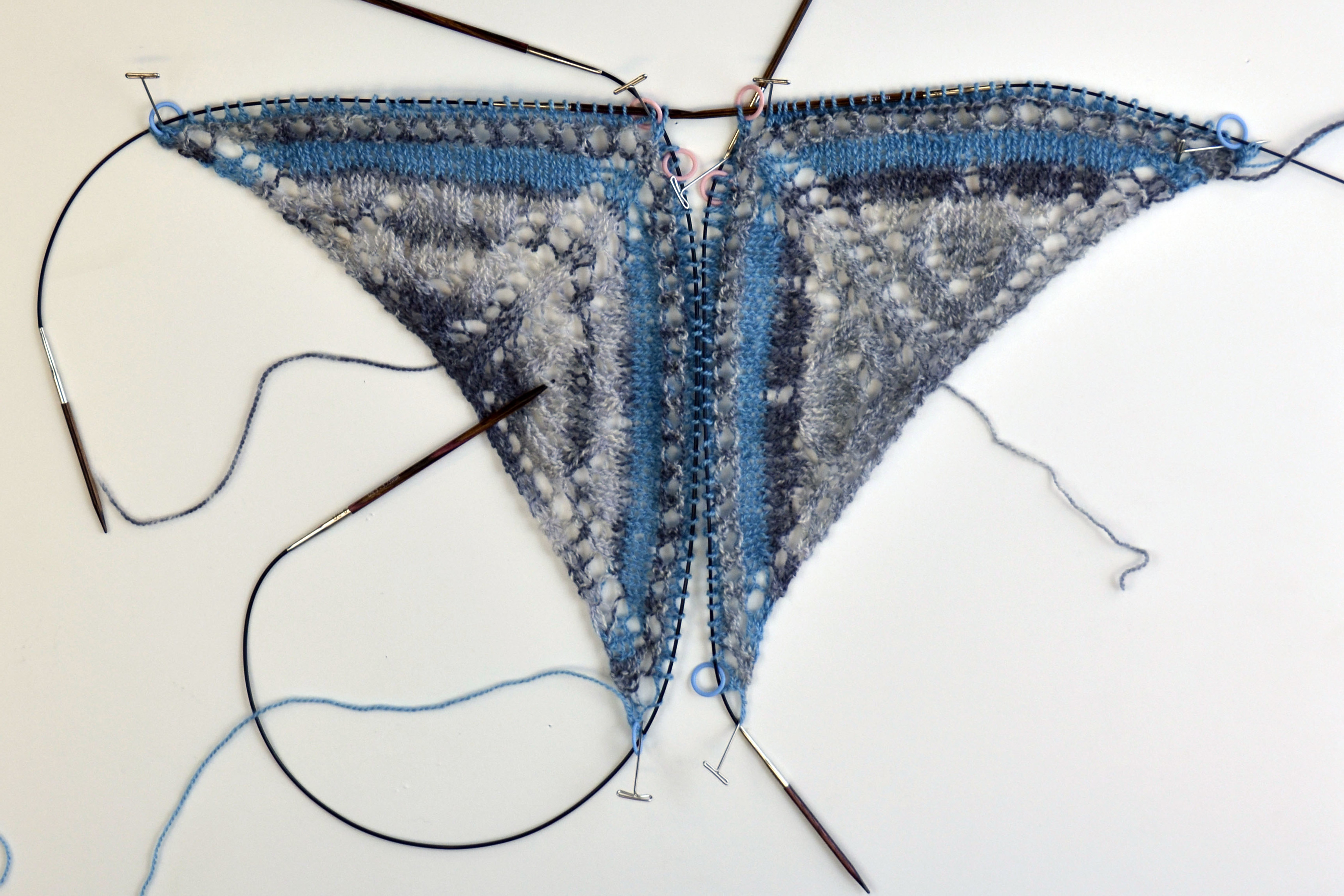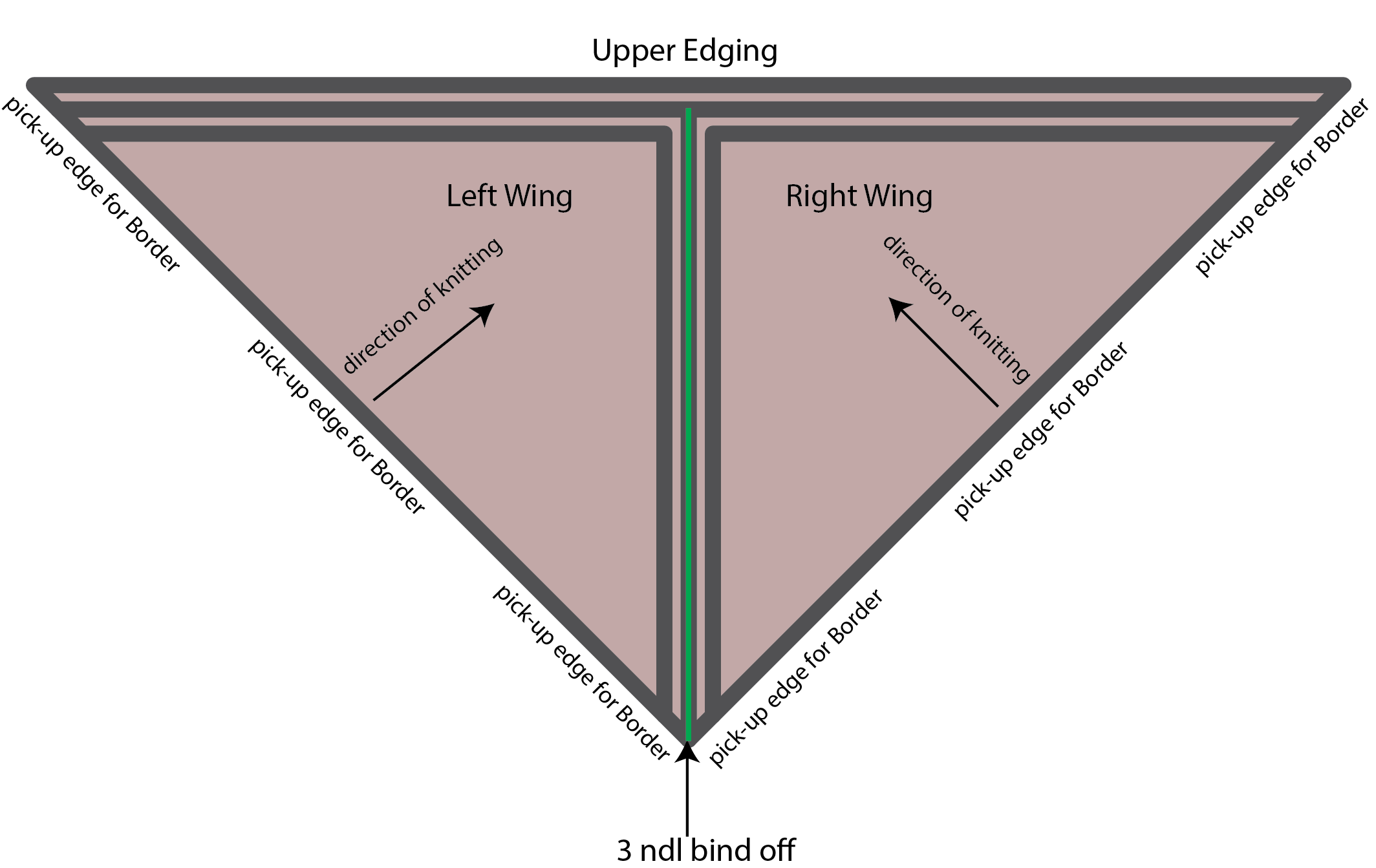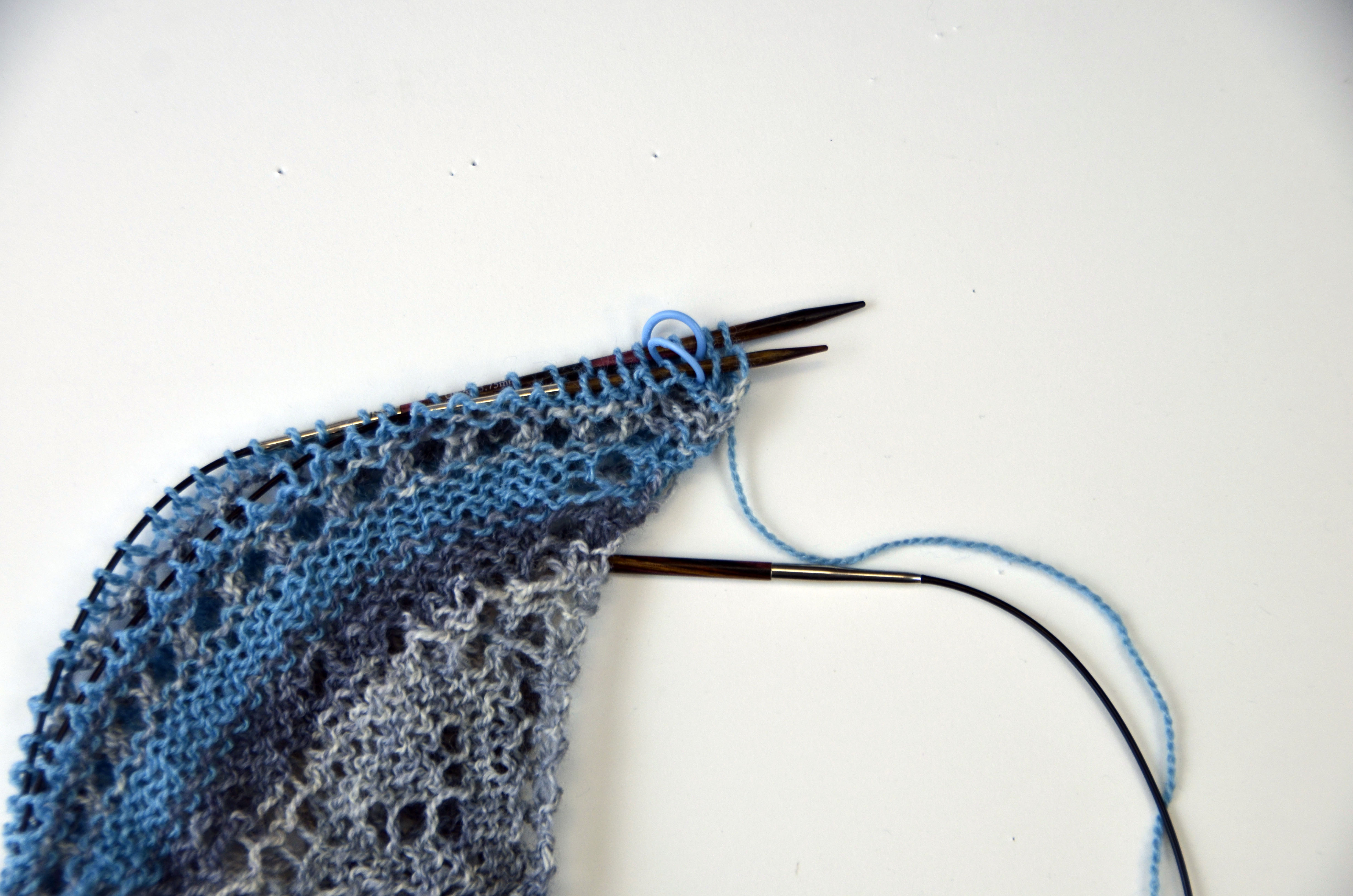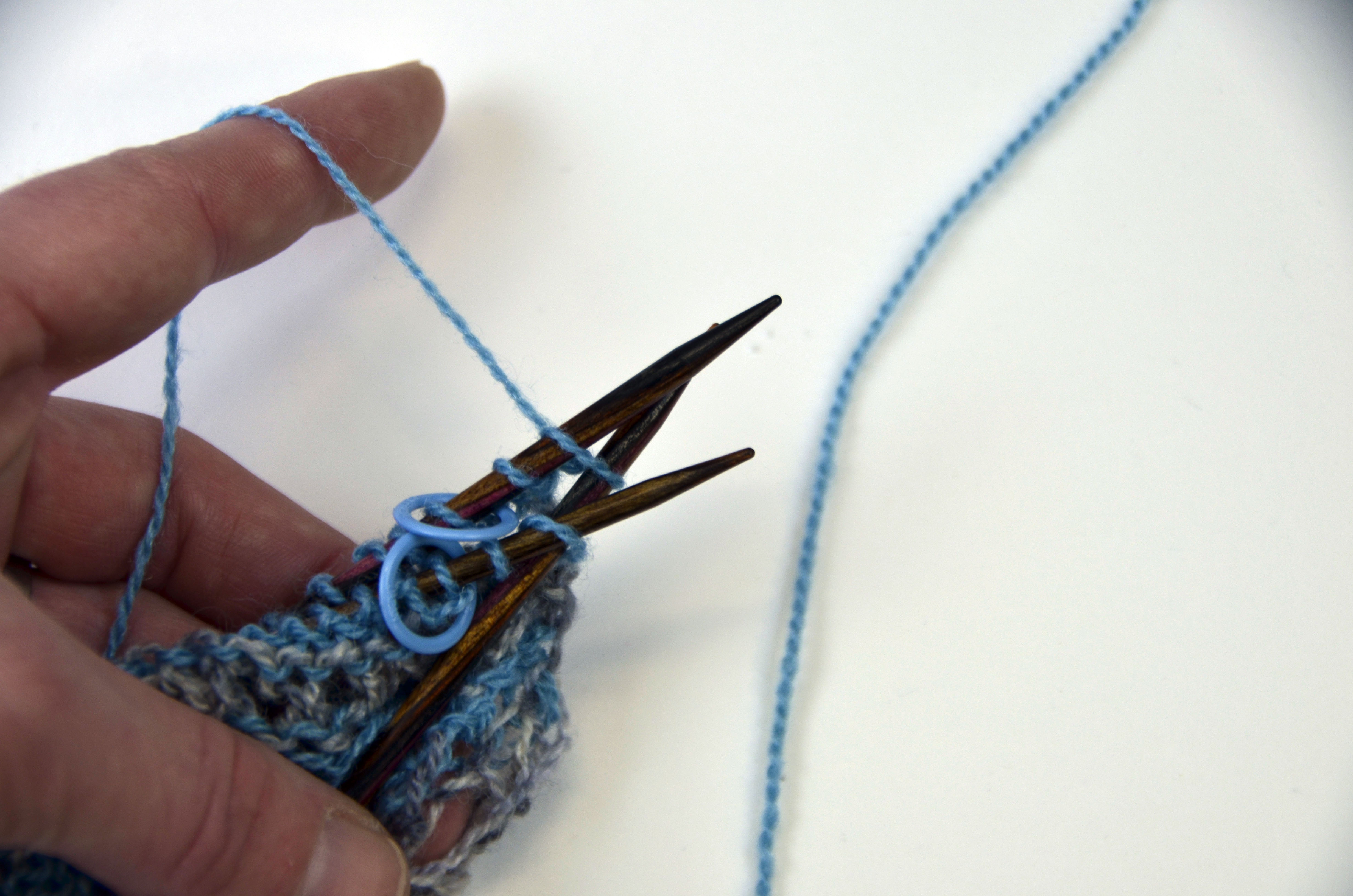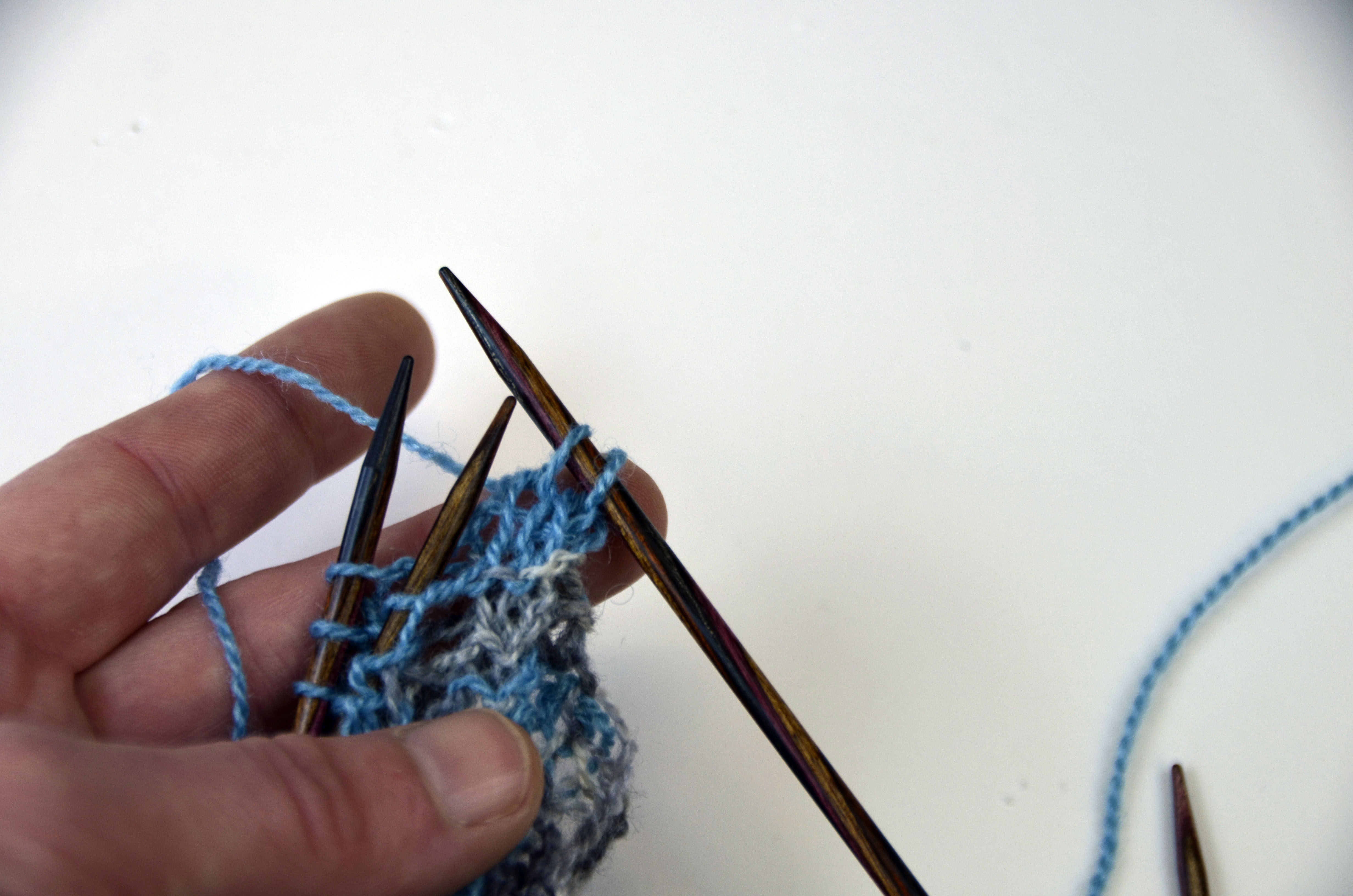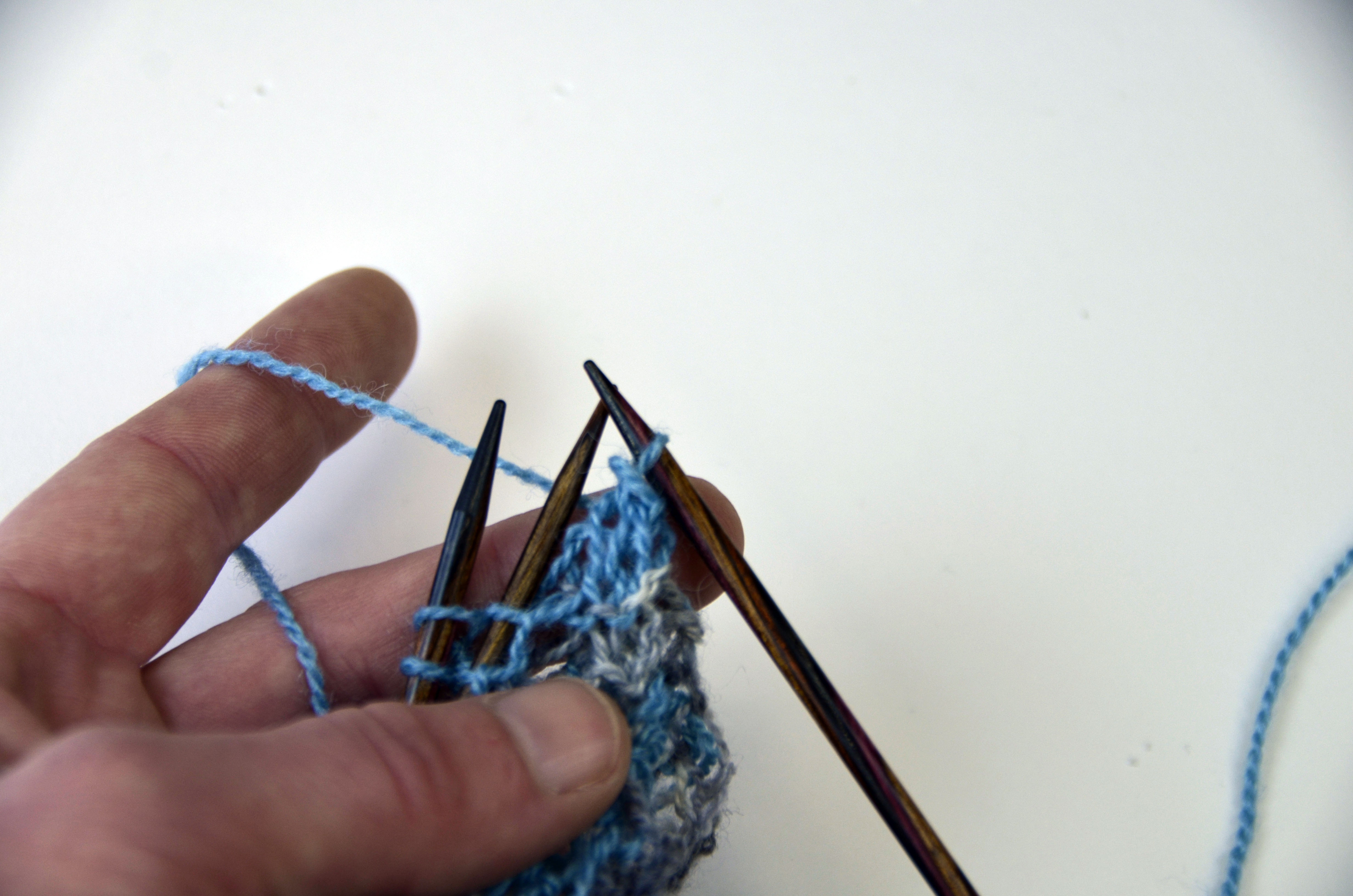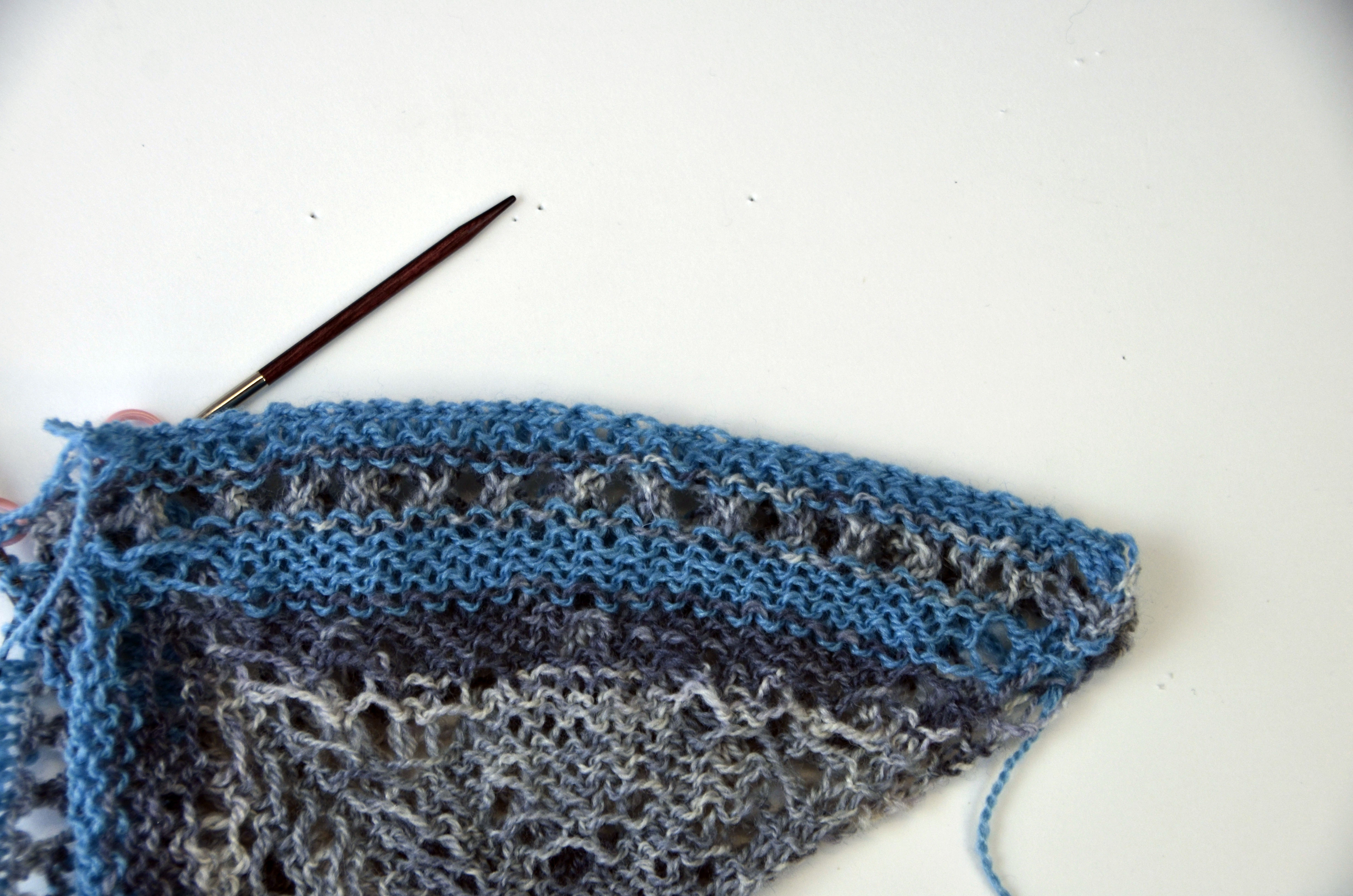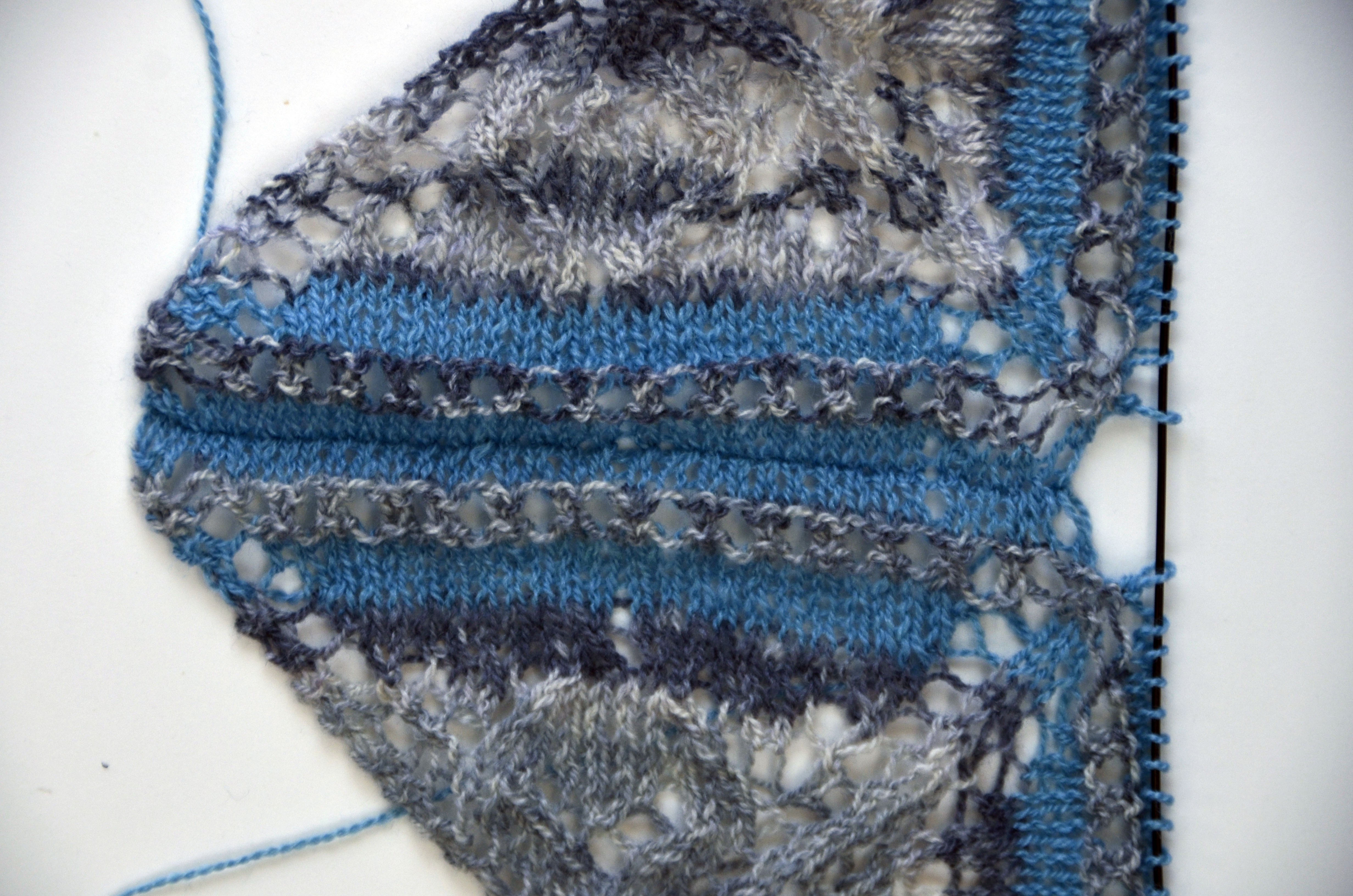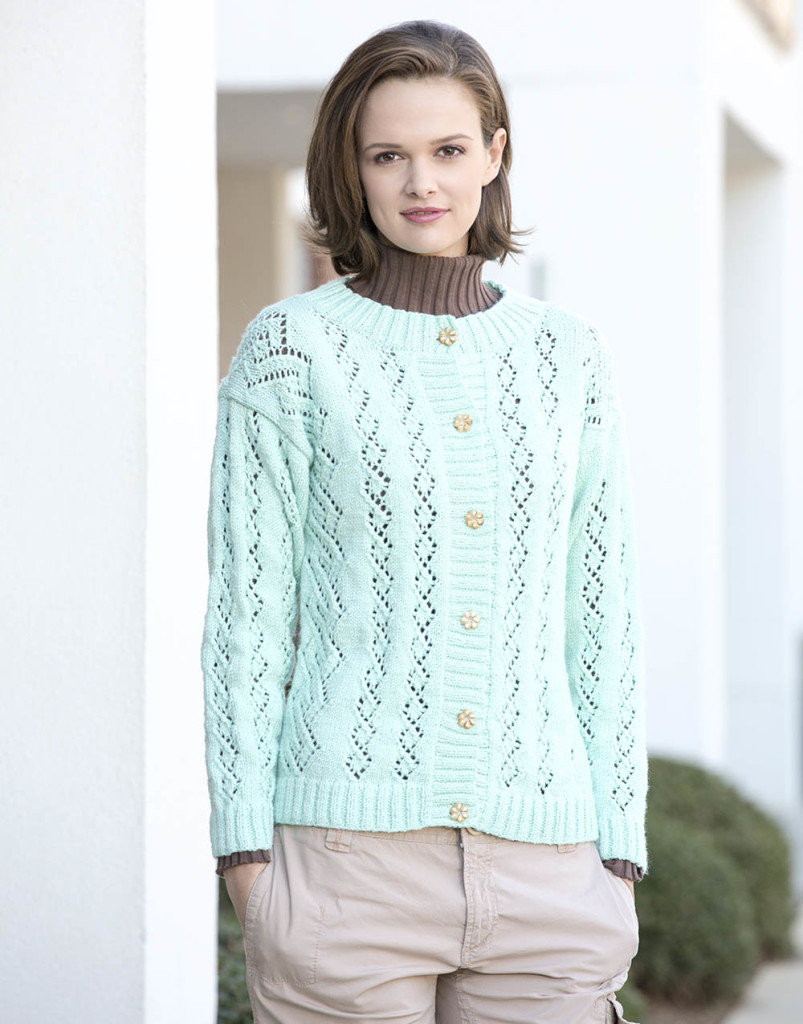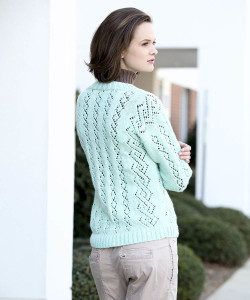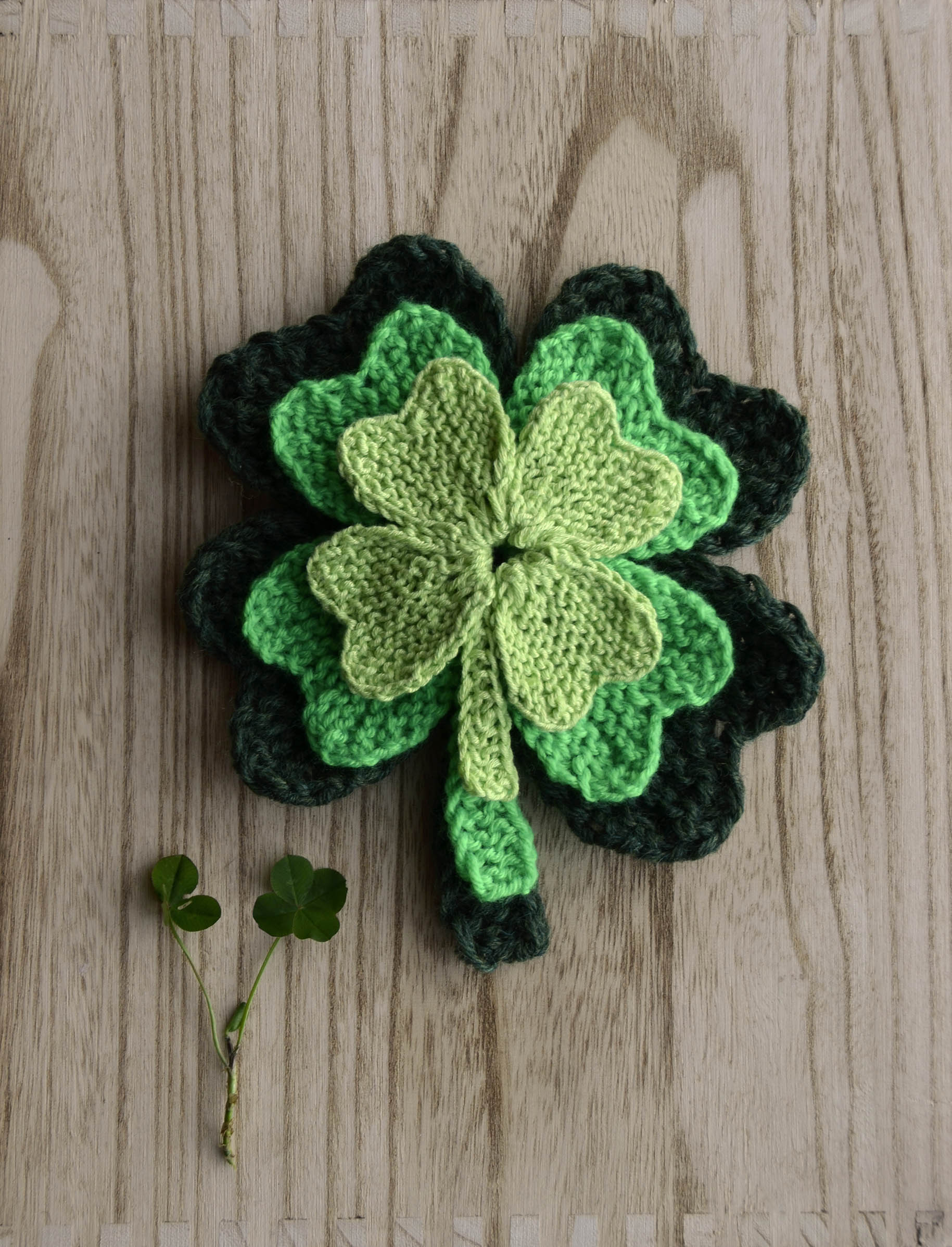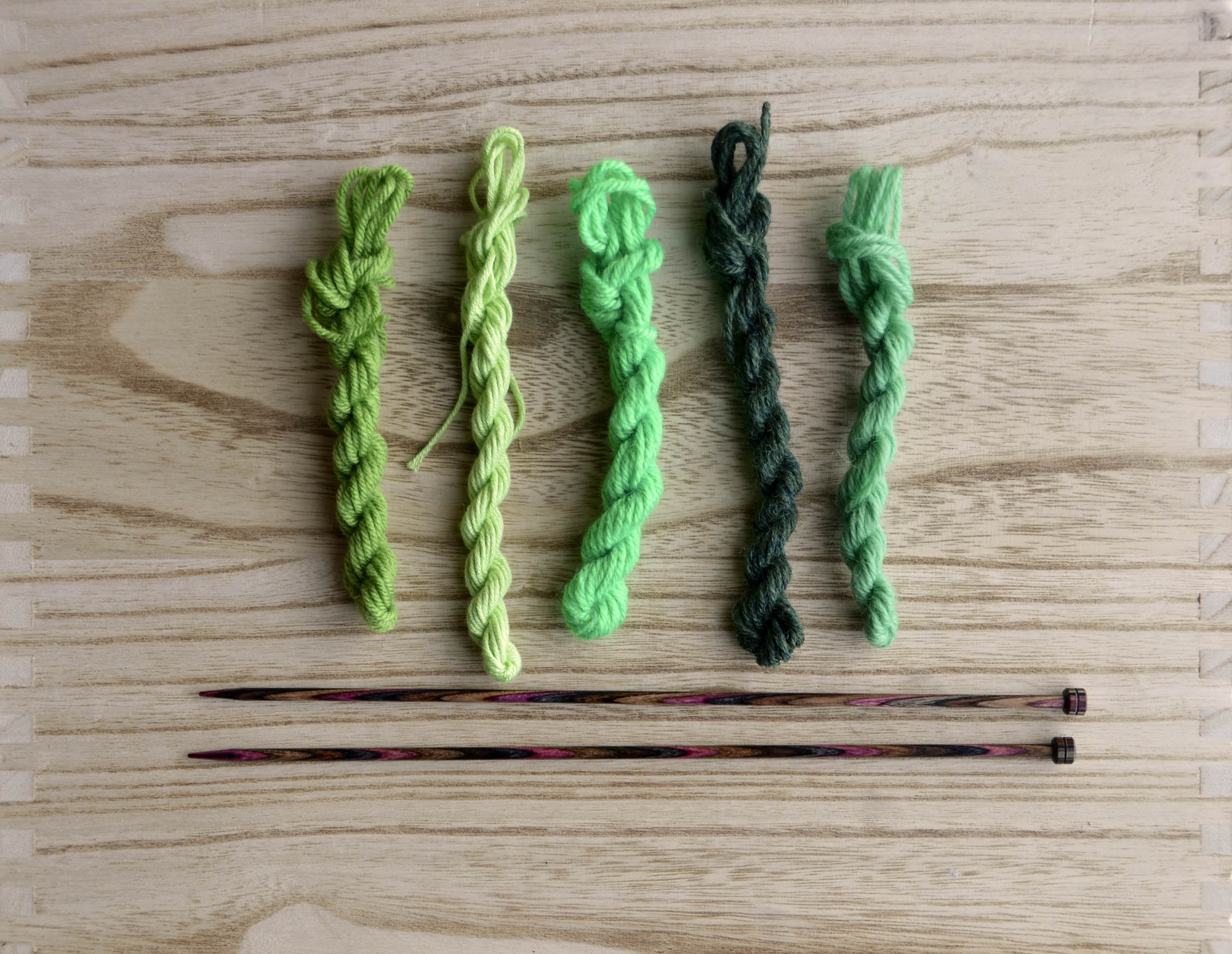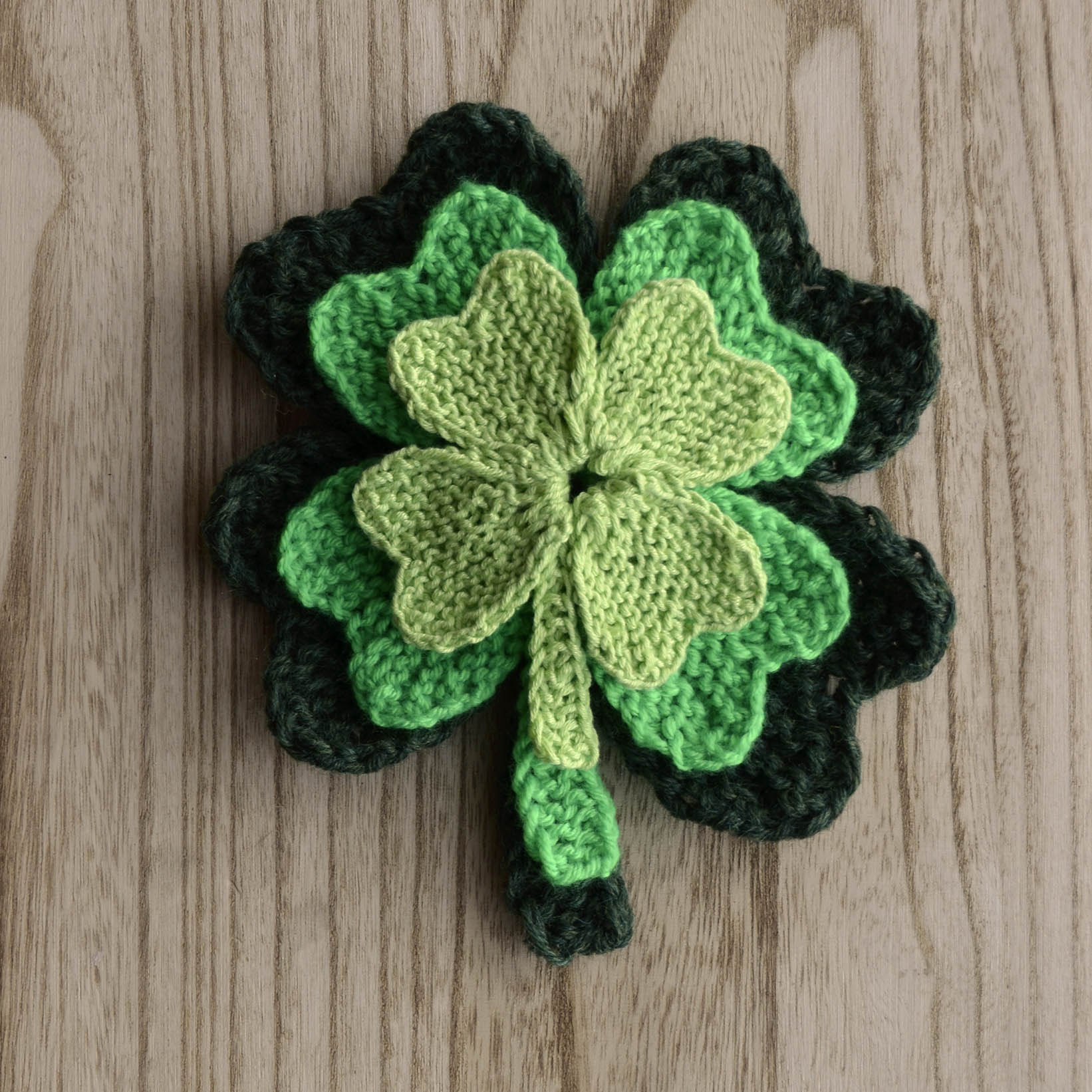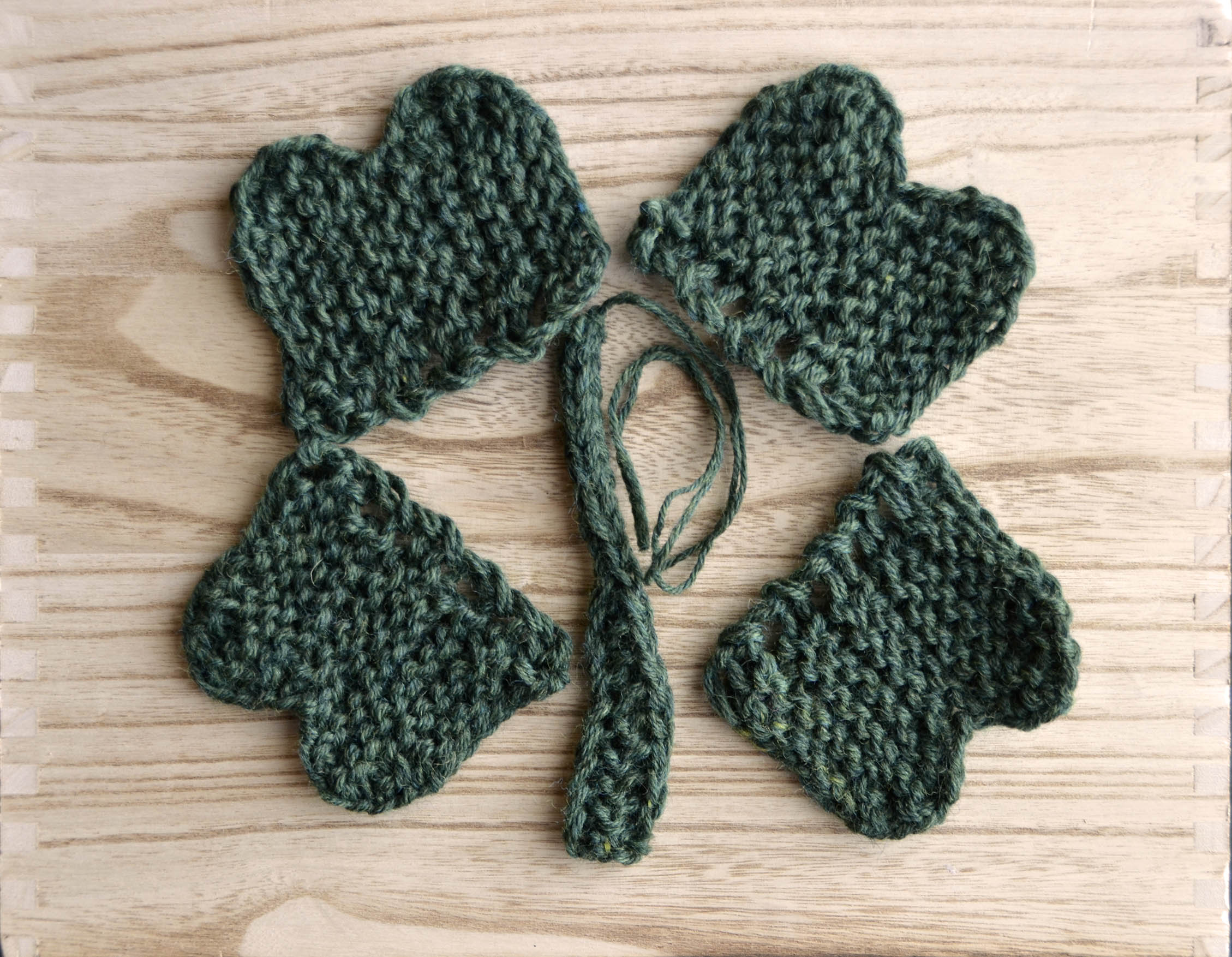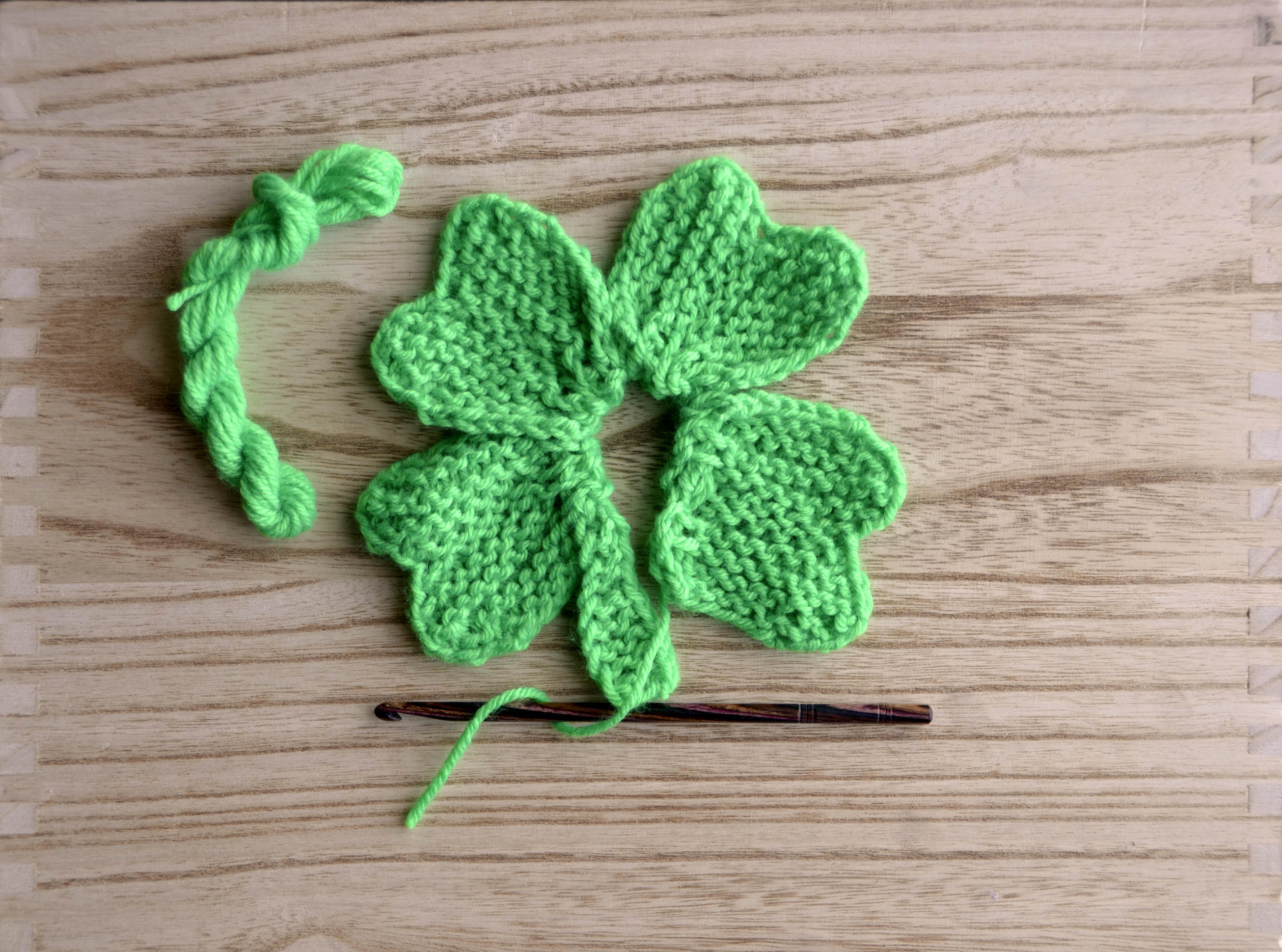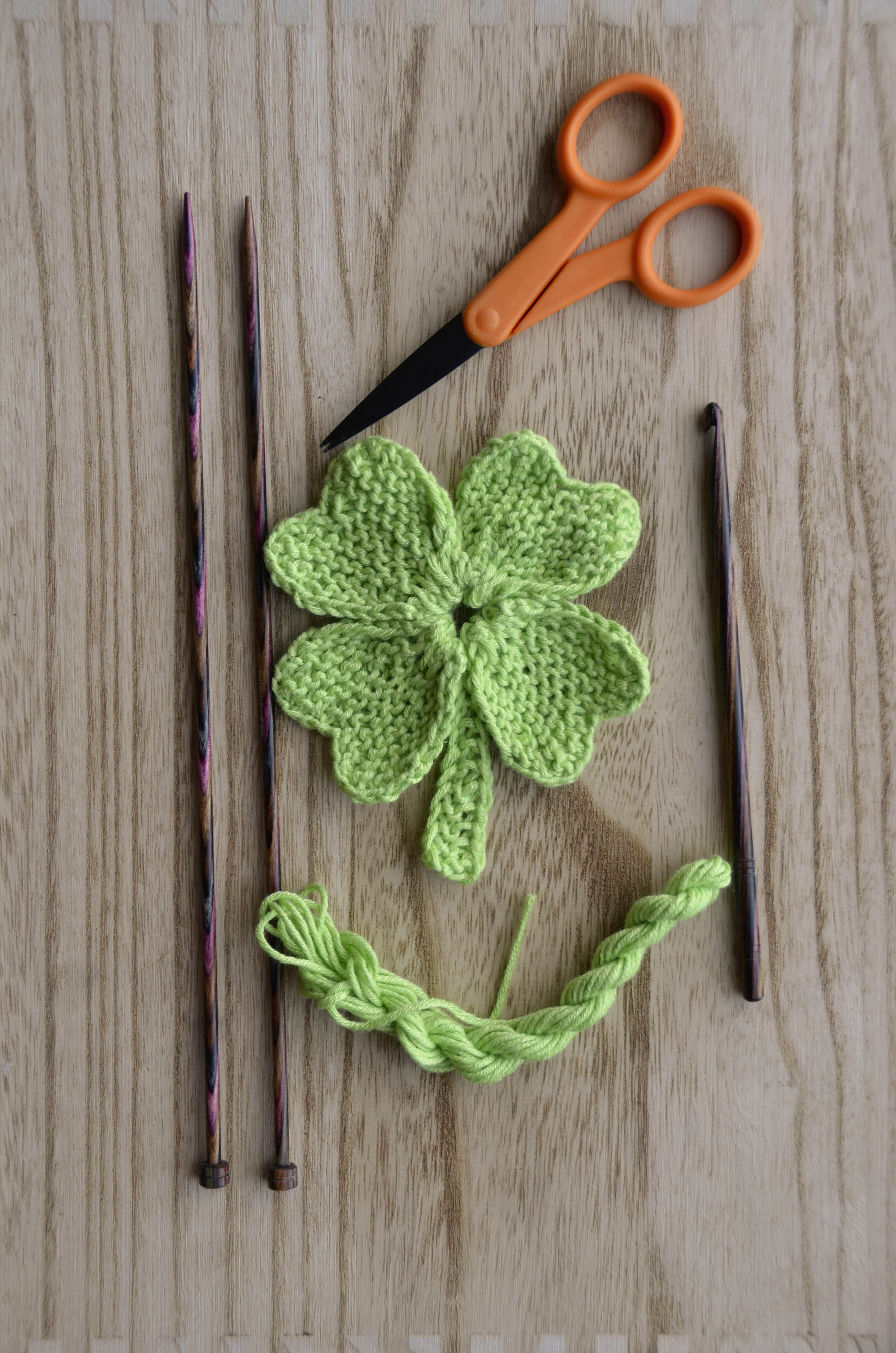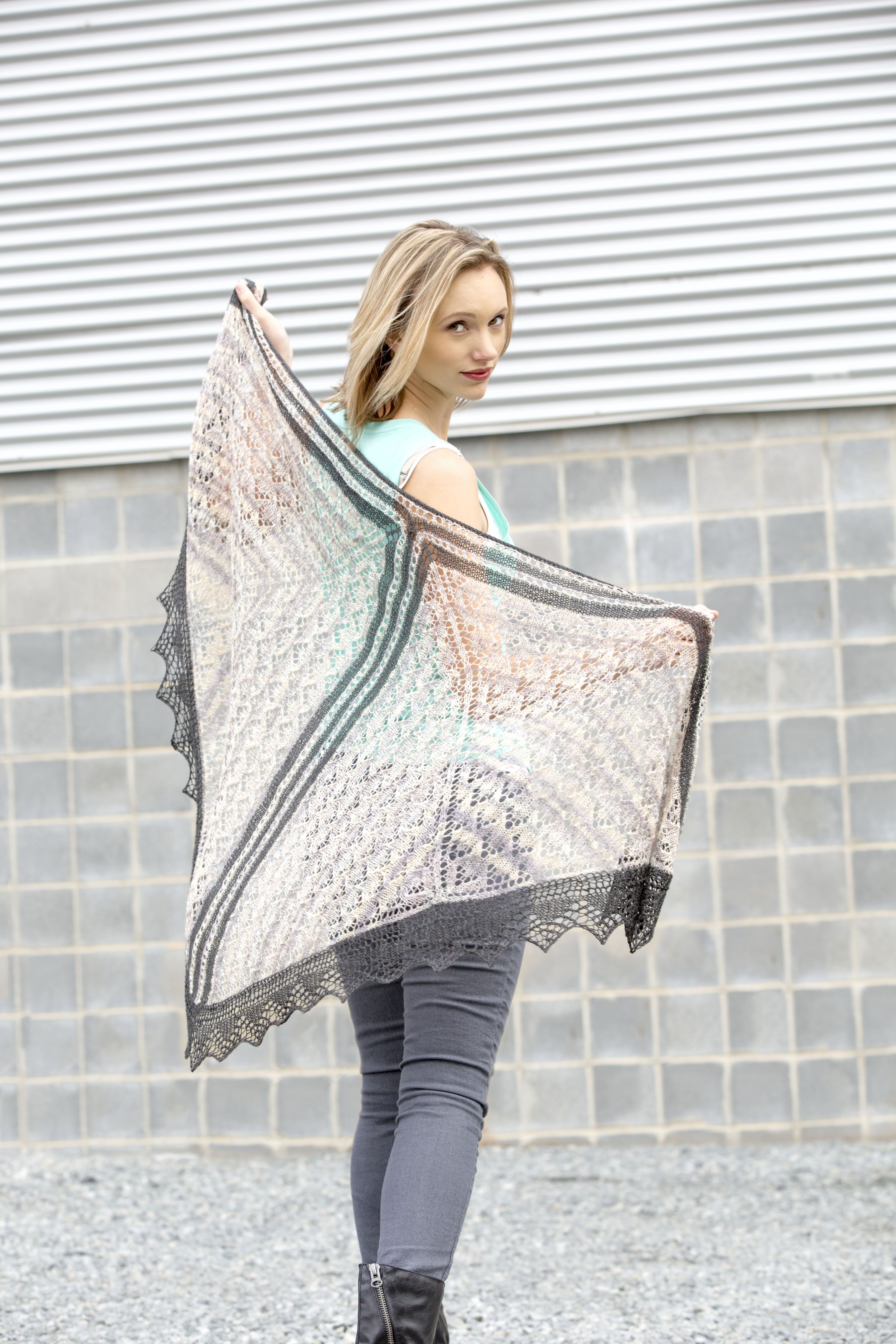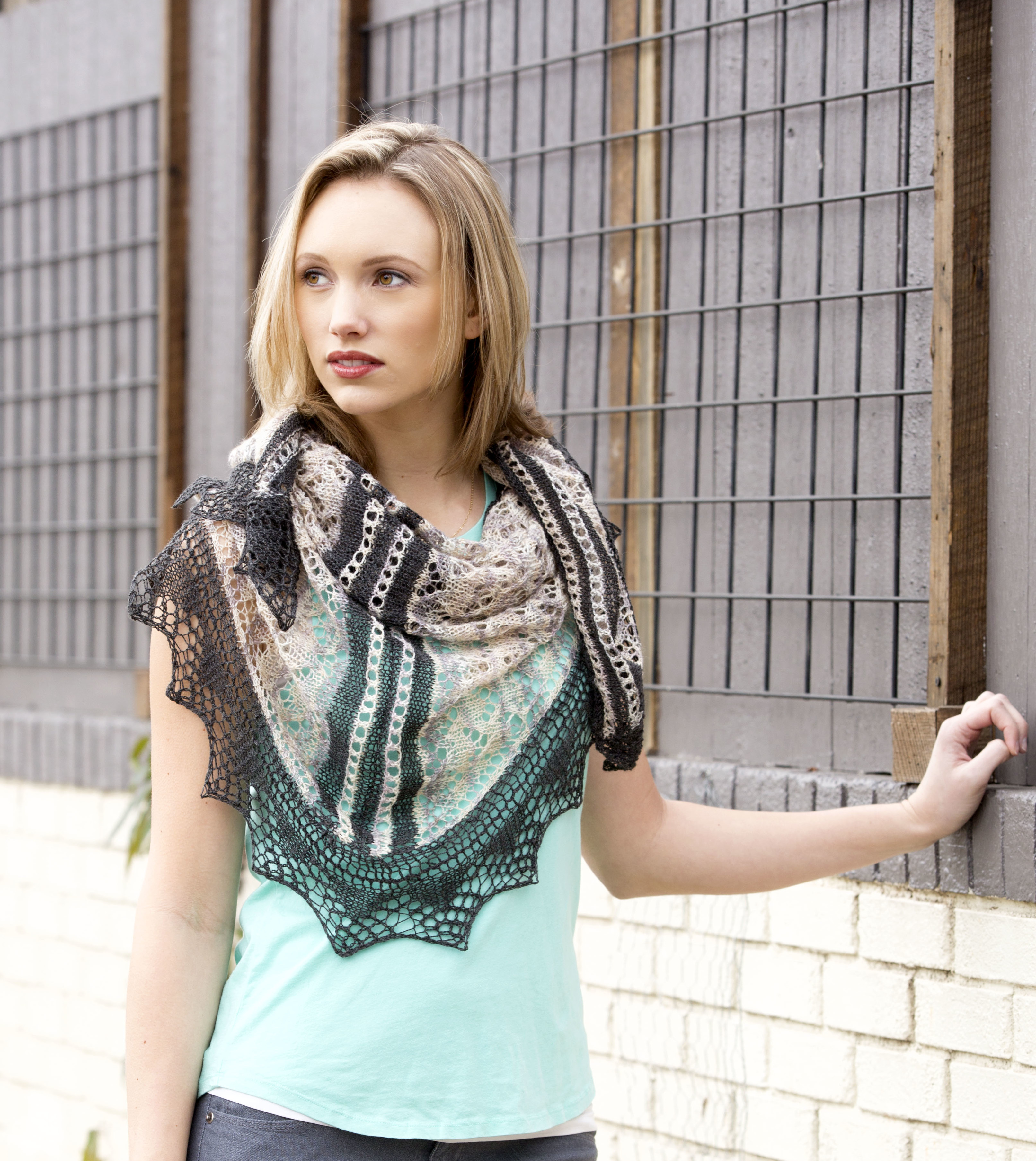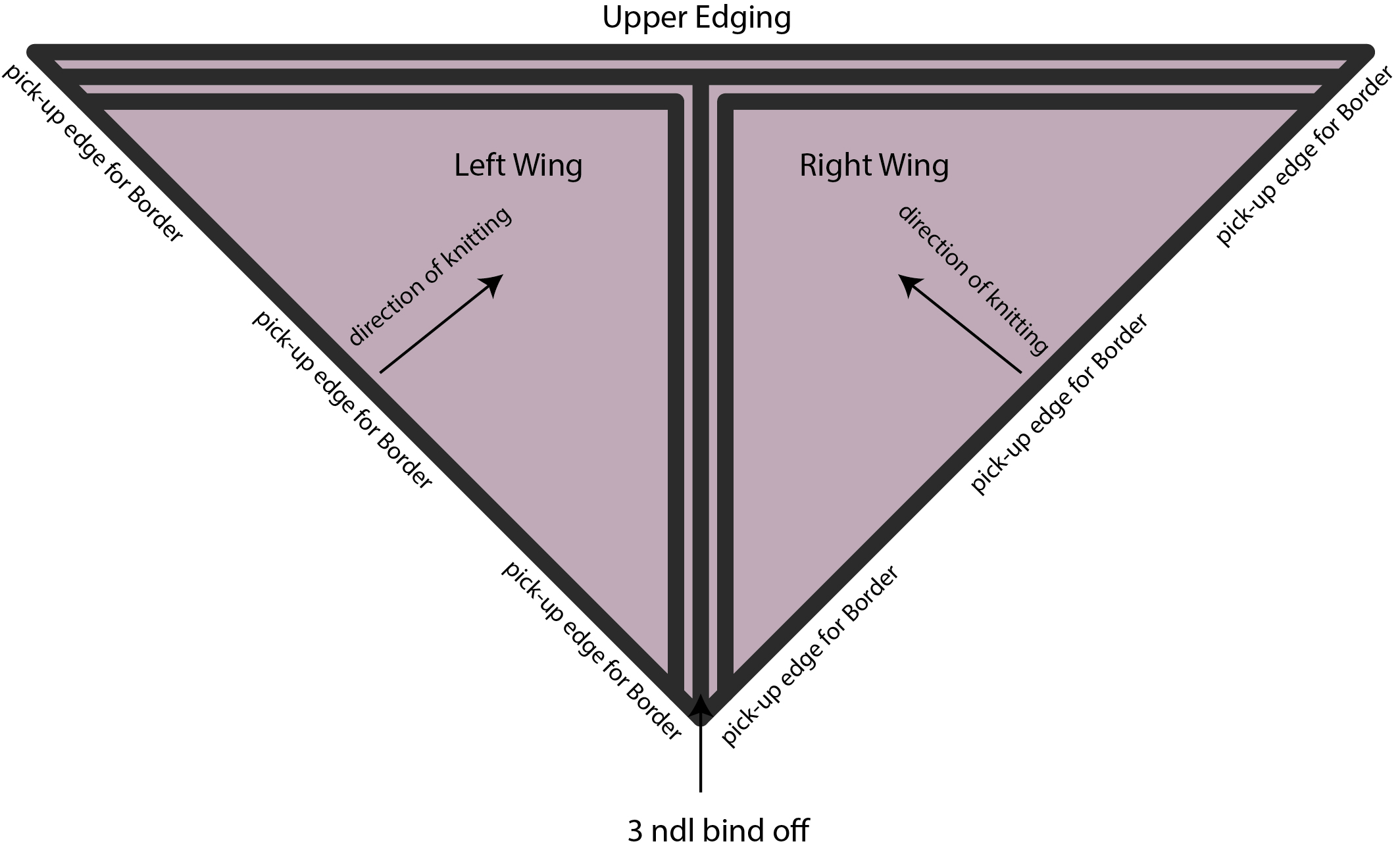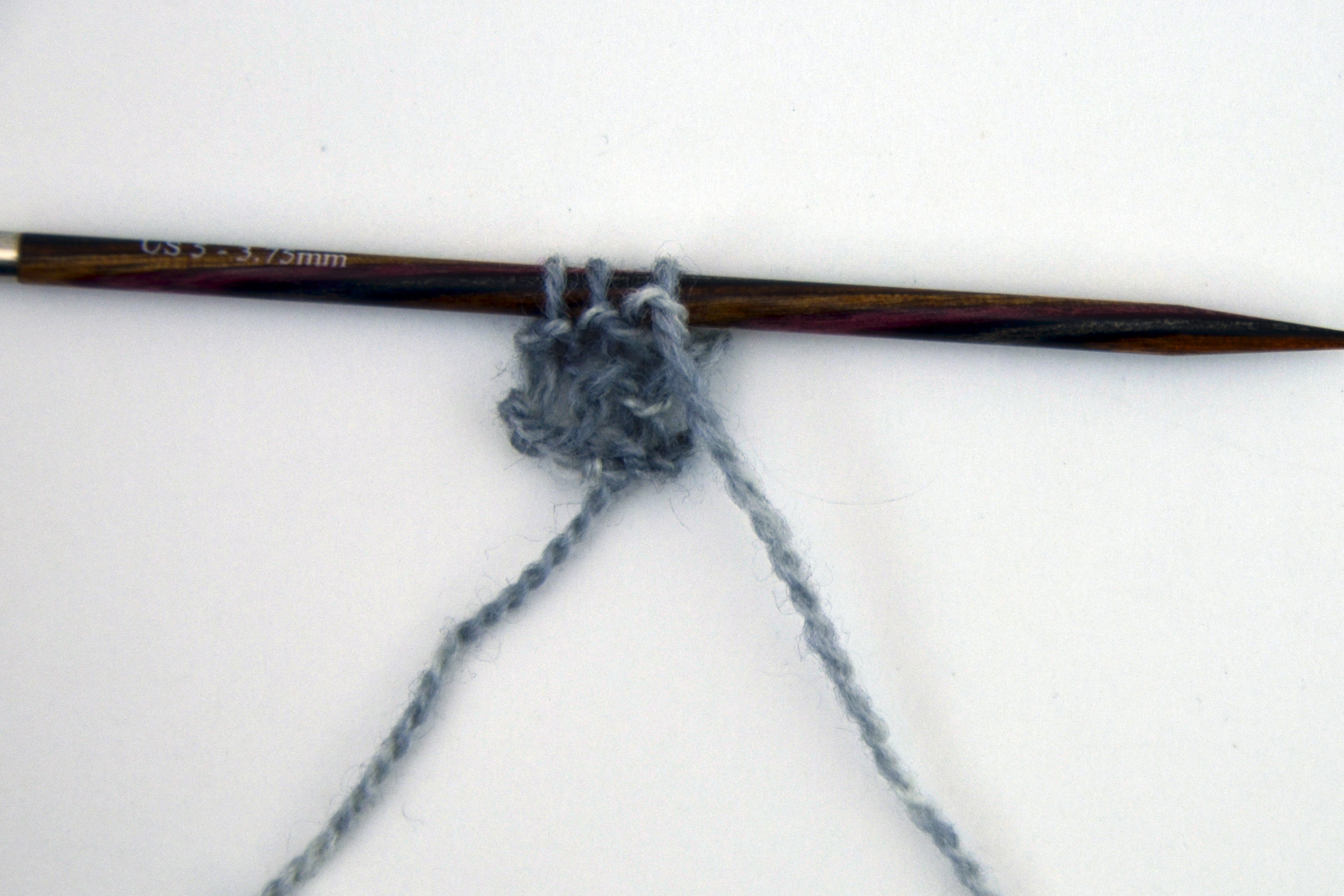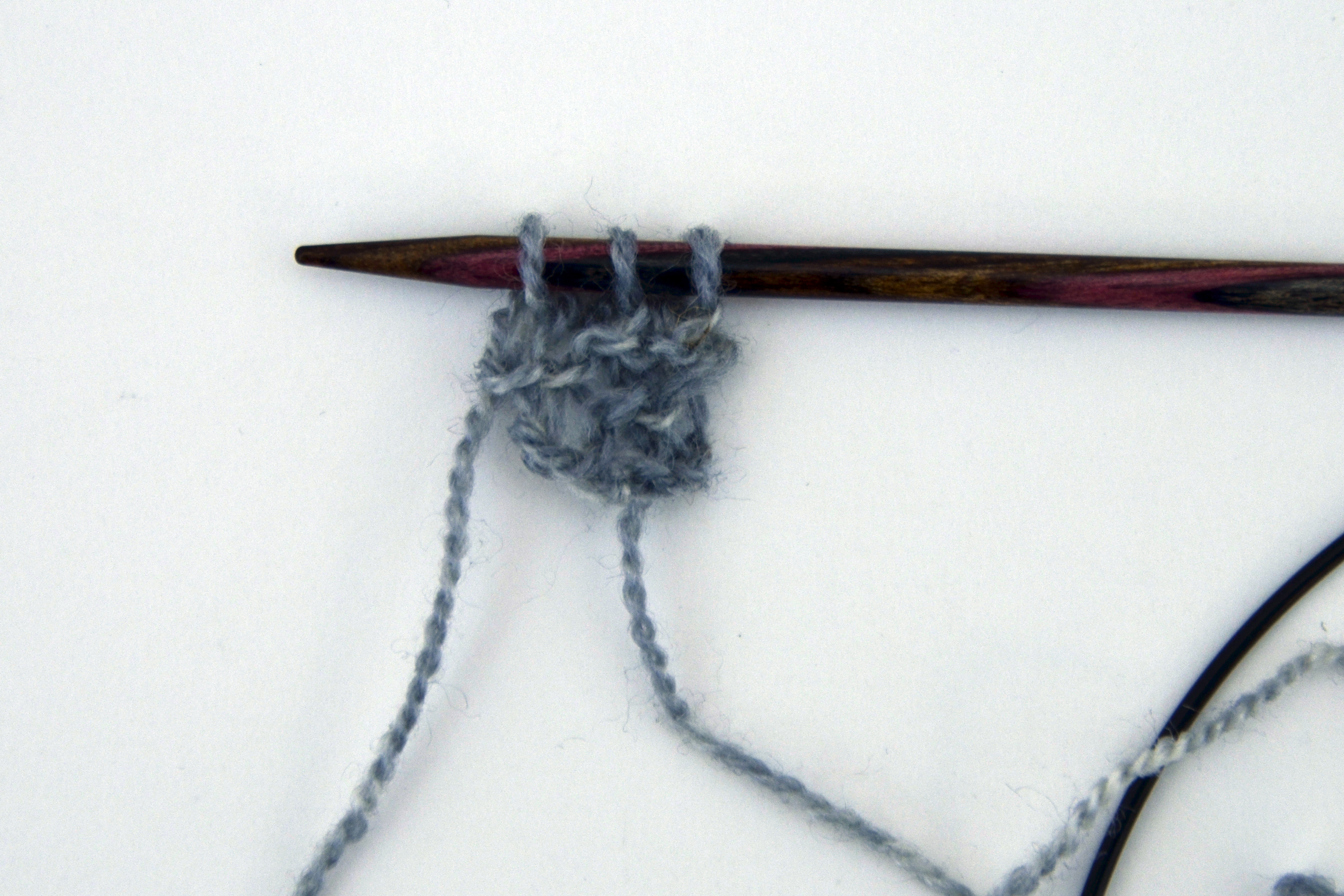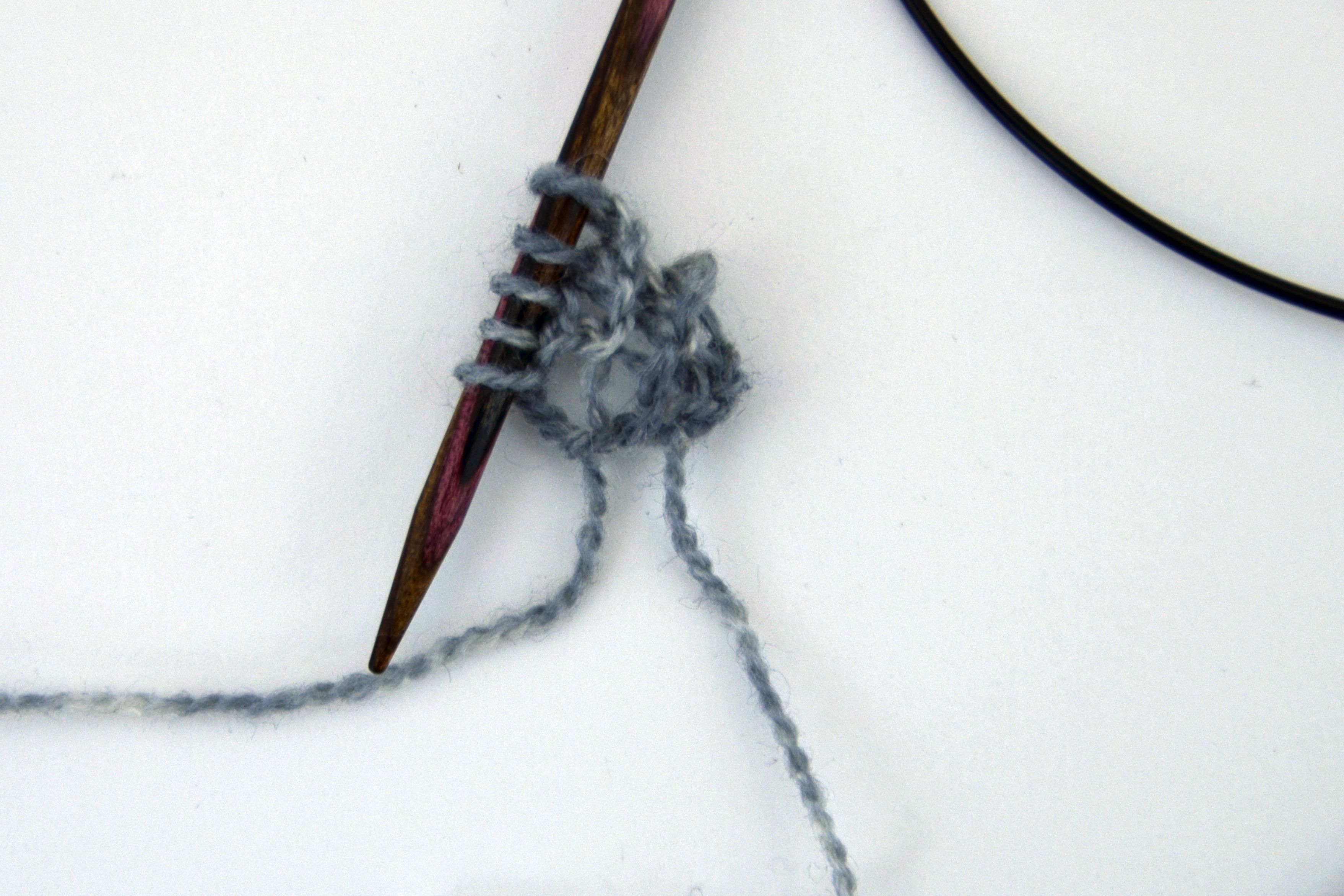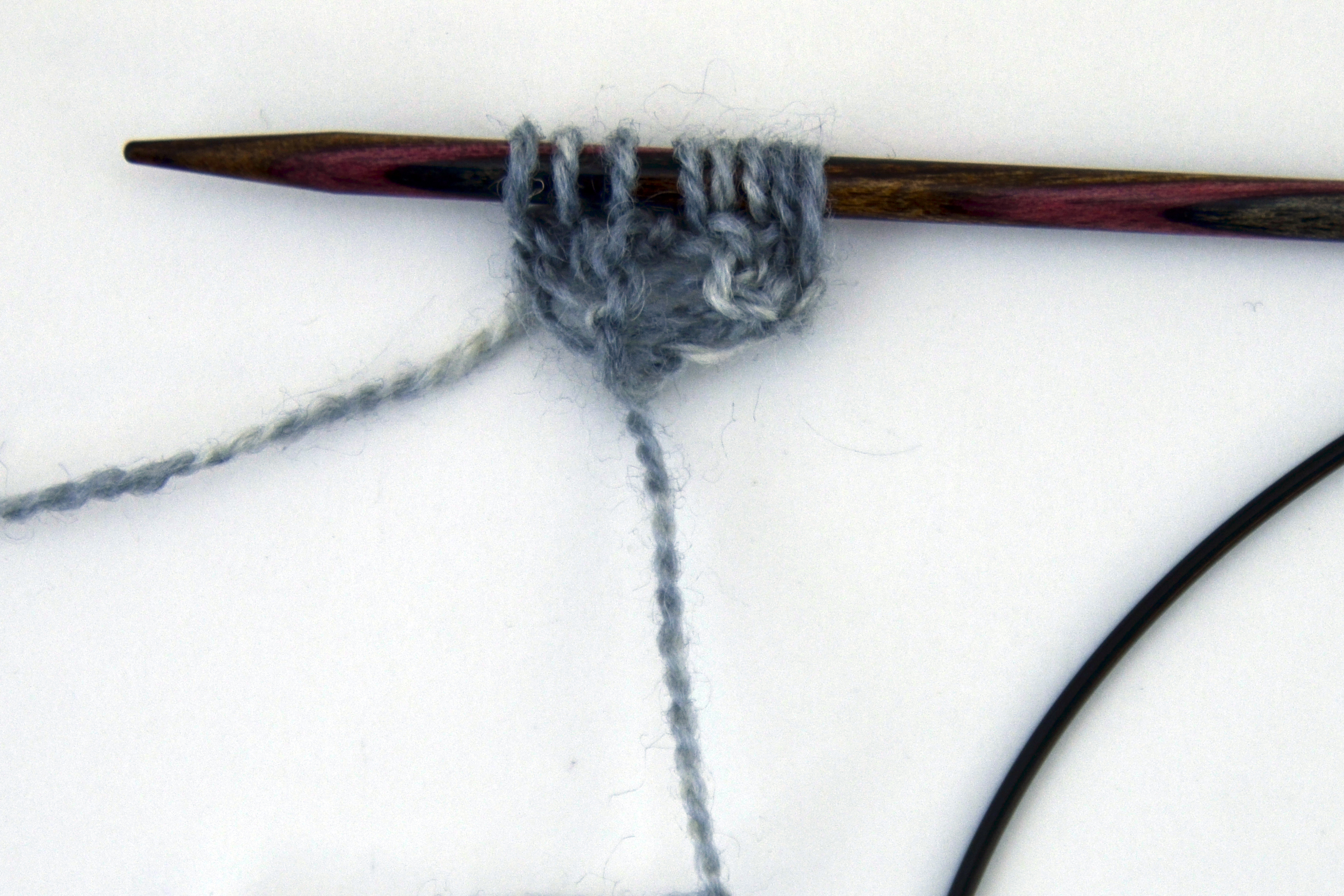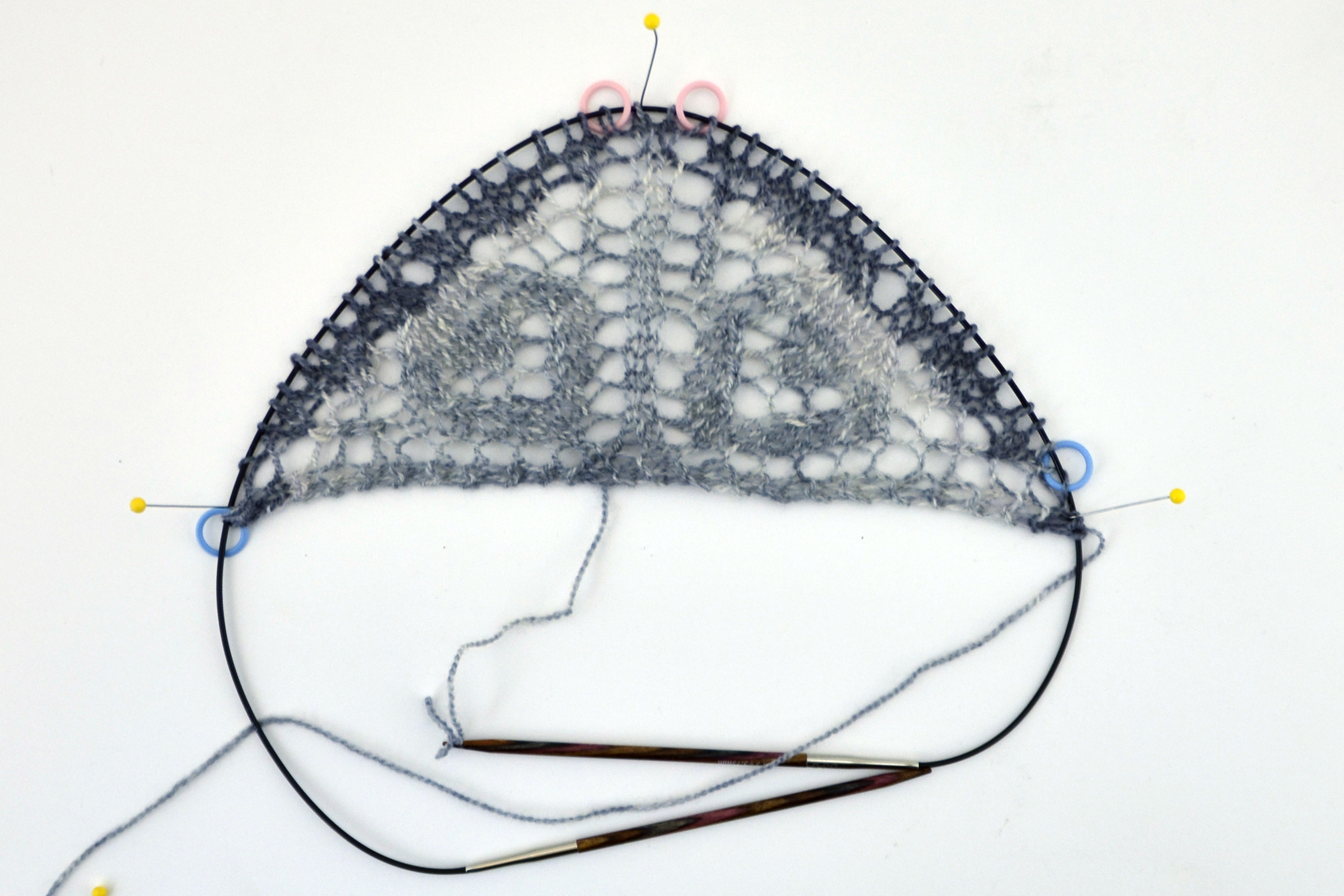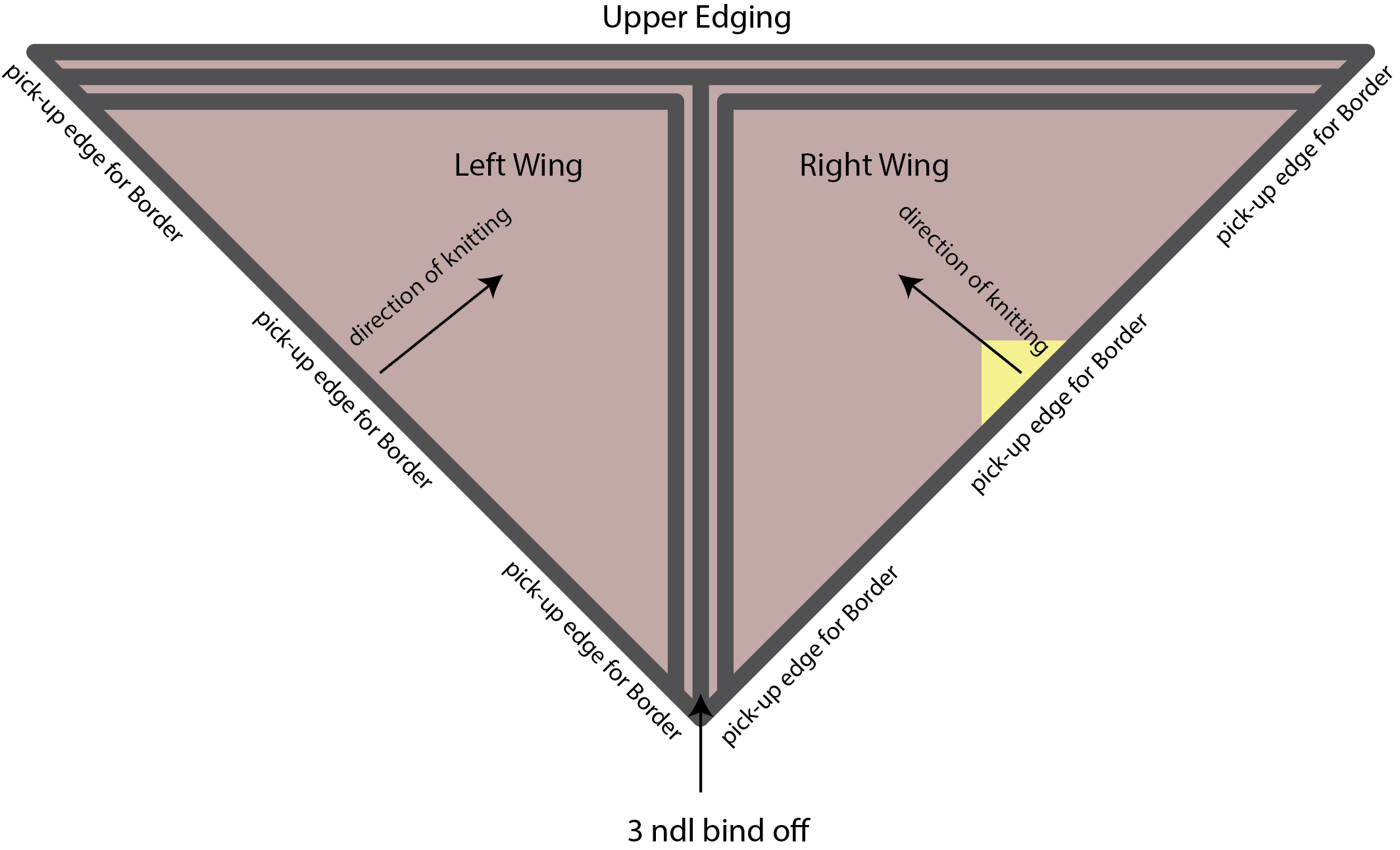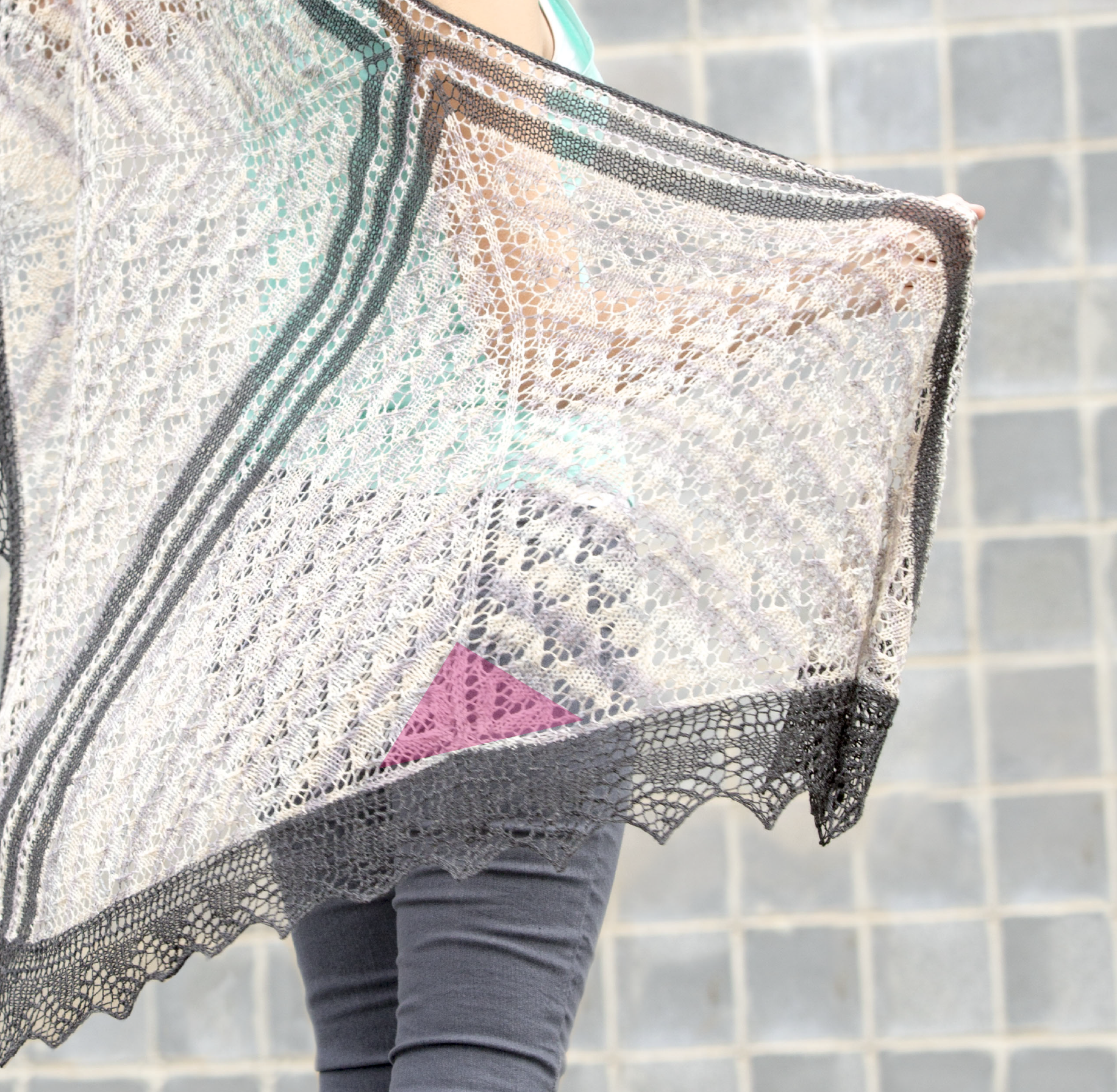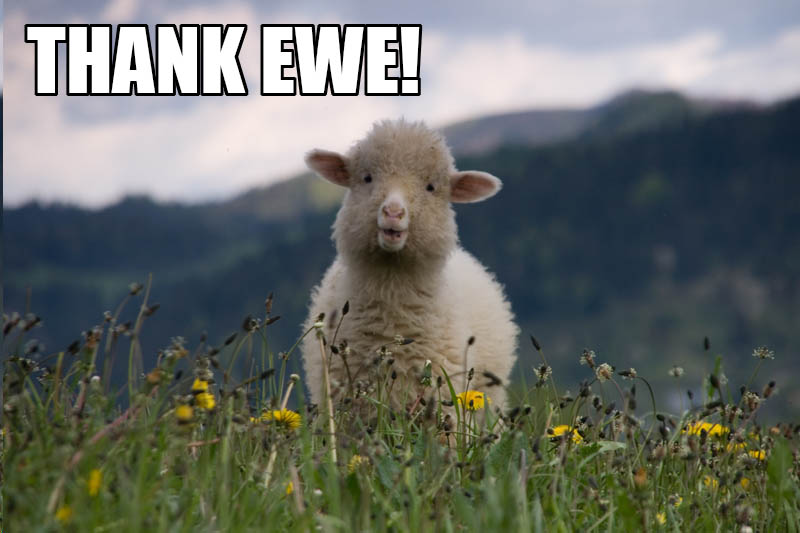For the last several weeks, I’ve been touching on various elements of some of the projects from our new ebook, Contrarian Shawls 2. The past 3 weeks were spent on techinques from the Bisected Shawl, and the 2 weeks before that I covered how to do filet crochet with the Delphi Stole.
I want to turn this week to the Traverse Scarf, which I think is the most wearable and functional piece in the whole collection.
It’s definitely more scarf than shawl, and I think of it as a visually stimulating little trifle. Traverse Scarf uses 2 shades of Good Earth Solids and 2 shades of Good Earth Adorn (spray print). More later in this post on color choices. Good Earth is a linen-cotton blend, making this a great item for warmer months.
Traverse Scarf is knit from one end to the other. It is a symmetric scarf, so any increases made in the first half have symmetric and mirrored decreases in the second half. Those lines of color in the scarf are Good Earth Solid, and they are created via slip stitches. There is only one color used in each row of this scarf, with the exception of the small section in the center back of the piece.
Today I want to talk about starting out this scarf and establishing the rhythm of increases and getting a feel for the pattern.
The first step is to cast on 7 stitches with the CC (Good Earth Solids) and then to purl 1 row.
Next, we will establish our first two Slip Stitch Columns (abbreviated SSC in the pattern). The next 2 rows will be worked in MC (Good Earth Adorn). On right side rows, the SSC is worked as: slip 1, p1, slip 1. Stitches are always slipped purlwise (inserting the right needle into the stitch on the left needle as though to purl) with the yarn held in back, or to the wrong side of the work.
Here I am slipping the first stitch. Slipping a stitch simply means to transfer it from one needle to the other. In this case, we’re transferring the stitch from the left needle to the right needle.
So I slipped 1, purled 1, and now I’m slipping the next stitch, the last of the 3-stitch SSC.
Next I place a stitch marker on my needle. I will always slip this marker when I encounter it. The purpose of stitch markers is generally to remind you of something. In this case, it is to separate the SSC from the increase section.
Now I’m going to make my first increase by purling into the front loop, then the back loop of the next stitch (abbreviated pfb). Then I place another stitch marker to indicate the other edge of my increase section. Since I’ve worked my pfb, my increase section now consists of 2 stitches.
Then I finish off my row by working another SSC over the last 3 stitches.
On the following (WS) row, I will work my SSC as: slip 1, k1, slip 1. Because stitches are always slipped with the yarn held on the wrong side of the work, my yarn is in front as I’m slipping the stitch.
And here’s what it looks like after the cast-on and the first 3 rows. It’s a start!
Here’s how things look after the first increase section. My markers are still separating the slip stitch columns from the center section which has grown from 1 stitch to 10.
Increases always occur every 4 rows, on right side MC rows, by purling into the front and back of the stitch just after that first marker.
Next, we will introduce the next SSC. Here’s how things look after the first row of this new section. There is the SSC at the right hand side, then 5 stitches, then our new SSC, then our new increase section, and finally the last SSC at the left hand edge.
And here’s how we’re looking after a few more rows after introducing our new SSC. By slipping CC stitches on MC rows, we are carrying up that solid color and making what look like colorful outlines.
The new point of increase is indicated by the white line below.
The rest of the first half of the scarf continues to have you work increases and introduce more slip stitch columns regularly. For me, this is one of those nice projects that doesn’t involve any kind of tough knitting acrobatics – the stitches are simple, but it’s still interesting with enough going on to hold my attention.
Like the project but not the colors? There are plenty of other options!
Traverse Scarf takes 1 hank each of 4 different colors. Here is a warm colorway option, and another cool option:
This project would also look nice with two colors of Adorn and one solid, or vice versa:
Or you could use just one color each of Adorn and a solid – the sky’s the limit! You can browse all the colors of Good Earth and Good Earth Adorn on our website.
I’ll be back next week with some more how-to goodies from Contrarian Shawls 2.
